| Intl. Notebook | Oct 12 2020 |

Whether by day or night the action was non-stop.
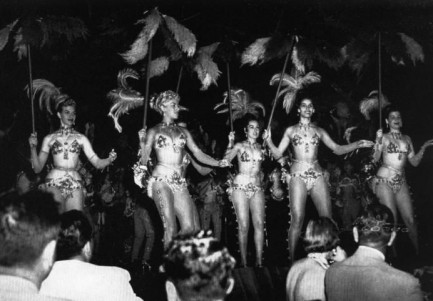
We love vintage nightclub photos, and vintage pix of people partying in general. Since Havana photos are unusually interesting, we're always drawn to them. There's a large number of Havana photos out there, but not primarily because of Cuba's political history. The photos really exist because Cuba was a pioneer of Caribbean tourism, attracting travelers beginning in the 1920s through a heyday of the mid-1950s. The island was promoted as a place of sophistication, mixed with permissiveness, unpredictability, and a touch of the primitive. This prompted various movers and shakers—from New York City businessmen to top musicians to Hollywood stars—to flock to Havana. And where important people went, cameras followed.
Was the Havana image true? Probably, based on what we've read. But it was not unique. During the same period Tangier had a similar reputation, as it attracted writers like Paul Bowles, William S. Burroughs, and numerous gay expatriates. During the 1960s Acapulco was known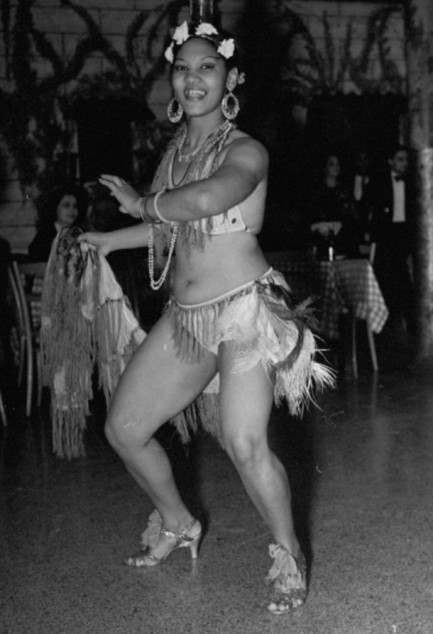 as a great place to go for thrills. During the 1980s, Ibiza or Mykonos. The 90s, Thailand or Goa. The 00s, Tulum. Havana wasn't unusual in terms of what it offered. Bigger, yes. More convenient for Americans, for sure. But numerous far flung locales have served as paradises for foreign visitors to lose themselves and get crazy.
as a great place to go for thrills. During the 1980s, Ibiza or Mykonos. The 90s, Thailand or Goa. The 00s, Tulum. Havana wasn't unusual in terms of what it offered. Bigger, yes. More convenient for Americans, for sure. But numerous far flung locales have served as paradises for foreign visitors to lose themselves and get crazy.
 as a great place to go for thrills. During the 1980s, Ibiza or Mykonos. The 90s, Thailand or Goa. The 00s, Tulum. Havana wasn't unusual in terms of what it offered. Bigger, yes. More convenient for Americans, for sure. But numerous far flung locales have served as paradises for foreign visitors to lose themselves and get crazy.
as a great place to go for thrills. During the 1980s, Ibiza or Mykonos. The 90s, Thailand or Goa. The 00s, Tulum. Havana wasn't unusual in terms of what it offered. Bigger, yes. More convenient for Americans, for sure. But numerous far flung locales have served as paradises for foreign visitors to lose themselves and get crazy.Most or all of the aforementioned places are considered to have changed for the worse, whether through ecological damage, destruction of historic architecture, unchecked overbuilding, overtourism, or all four scourges at once. But it was revolution that changed Havana, a fact that gives vintage photos from there a particular poignancy. A typical narrative is that while elites and tourists partied, exclusion, inequality, and poverty helped fertilize the seeds of upheaval. But we don't judge anyone in these shots. We've lived in similar circumstances in Central America. We were even partners in a beach bar in the Caribbean. We were always well aware of the prevailing socio-political problems, and we sympathized greatly with the local populations. But it didn't stop us from partying the nights away.
There's an immense feeling of freedom being in a simpler place—and for all its opulent nightclubs and restaurants, Havana is said to have exuded a primeval sensuality that intoxicated tourists and expatriates. If you live in the U.S. or some other modern nation, that feeling isn't something you can achieve by merely paring down your current lifestyle. The things you give up continue to exist all around you. By rejecting those, you become a weirdo. But by living in a less modern nation your life truly changes top to bottom, and you gain this while still existing above the local mean. That's the paradox, or the injustice, depending on your point of view: your satisfaction derives partly from the ability to take or leave anything you wish, because you are economically able to do so. You live more simply than you did, yet live better than most people around you. It isn't noble, but it's very much an attraction.
Bowles and Burroughs lived well in Tangier because it was immensely cheaper than Europe or the U.S. With the savings gained they hosted parties and had time to hone their literary crafts. They were a part of the local society, but existed in a middle-upper stratum, high above the impoverished, well below the Moroccan elites, benefitting from the general perception that foreigners from rich nations are themselves rich. That's how it was for us too. So there's inequality built into that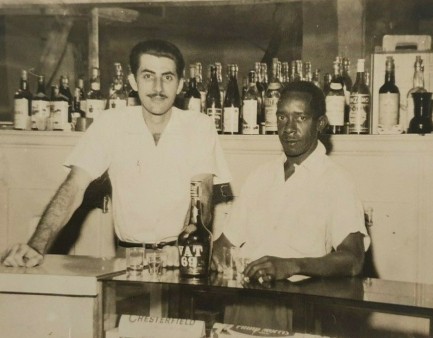 type of expatriate experience. It's unavoidable. A friend of ours lived in a stick shack on Cayos Cochinos for an entire year and he was still considered a rich foreigner. Everyone knows you have a choice. The Americans who partied in Cuba could never have been anything but wealthy invaders, no matter the reality of their finances, or the inclusiveness their sensibilities.
type of expatriate experience. It's unavoidable. A friend of ours lived in a stick shack on Cayos Cochinos for an entire year and he was still considered a rich foreigner. Everyone knows you have a choice. The Americans who partied in Cuba could never have been anything but wealthy invaders, no matter the reality of their finances, or the inclusiveness their sensibilities.
 type of expatriate experience. It's unavoidable. A friend of ours lived in a stick shack on Cayos Cochinos for an entire year and he was still considered a rich foreigner. Everyone knows you have a choice. The Americans who partied in Cuba could never have been anything but wealthy invaders, no matter the reality of their finances, or the inclusiveness their sensibilities.
type of expatriate experience. It's unavoidable. A friend of ours lived in a stick shack on Cayos Cochinos for an entire year and he was still considered a rich foreigner. Everyone knows you have a choice. The Americans who partied in Cuba could never have been anything but wealthy invaders, no matter the reality of their finances, or the inclusiveness their sensibilities.Living comfortably means the novelties one experiences seem thrilling or romantic. When we were knocking around Guatemala, El Salvador, and the Bay Islands, we turned washing our clothes by hand into an enjoyable ritual, yet understood quite well that many families' daily water intake literally depended on walking a mile to a river. Buying food from the local fruit and veggie stand was far more convenient than queuing at the supermarket for meat, and we ended up dropping to our college weight, but we were nevertheless aware that many people couldn't afford any food, and would have been disgusted at how pleased we were that our reduced fat intake meant we could show six pack abs at the beach. We helped some local families, both financially and logistically, but when your downsized existence is a choice you can never truly fit in.
But the freedom you feel is real. Offloading the burdens of modern life brings legitimate satisfaction. The pursuit of pleasure takes on a special joy. We hit bars, parties, and gallery mixers continually. As foreigners there's no social stigma to drinking every night. Unless you have a job—and we didn't—it's how you form a social circle. Locals generally disapprove, but their judgements carry little weight. So when we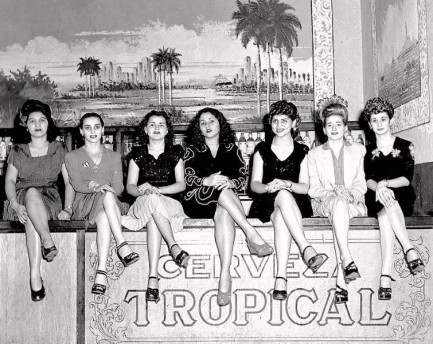 look at Havana partying shots we don't quite see oblivious, entitled people, because we know it isn't that simple. Most of them knew what was percolating. Stability was diminishing fast. There was a dissolved parliament, large protests, a 1953 battle in Santiago de Cuba, and other signposts on the way to change. It was clear the fun could never last.
look at Havana partying shots we don't quite see oblivious, entitled people, because we know it isn't that simple. Most of them knew what was percolating. Stability was diminishing fast. There was a dissolved parliament, large protests, a 1953 battle in Santiago de Cuba, and other signposts on the way to change. It was clear the fun could never last.
 look at Havana partying shots we don't quite see oblivious, entitled people, because we know it isn't that simple. Most of them knew what was percolating. Stability was diminishing fast. There was a dissolved parliament, large protests, a 1953 battle in Santiago de Cuba, and other signposts on the way to change. It was clear the fun could never last.
look at Havana partying shots we don't quite see oblivious, entitled people, because we know it isn't that simple. Most of them knew what was percolating. Stability was diminishing fast. There was a dissolved parliament, large protests, a 1953 battle in Santiago de Cuba, and other signposts on the way to change. It was clear the fun could never last.The assortment of people you see here are caught on film like insects caught in amber, long dead but preserved. They're having a few laughs, enjoying some drinks, executing deft turns on dance floors, making their small, temporary marks on the world, leaving behind images showing them for one sliver of a moment in timeless eternity. Things changed in Havana, and now things have changed for all of us. If circumstances where we can dance and laugh and shout together in hot crowded places without fear of sickness ever return, be sure to embrace them fully. We don't just mean in some far flung tropical enclave. We mean anywhere. Because if it isn't a virus that takes those pleasures away, it'll be the march of years. You'll want to have done your best with this gift called life.
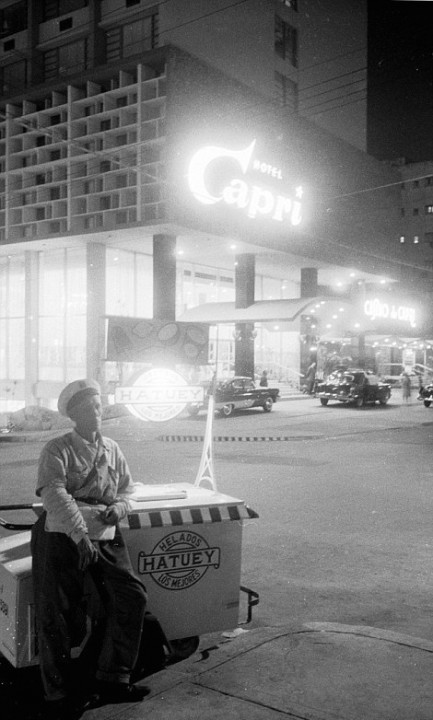 An ice cream vendor patiently waits for potential customers to emerge from the Capri Hotel and Casino, 1958.
An ice cream vendor patiently waits for potential customers to emerge from the Capri Hotel and Casino, 1958.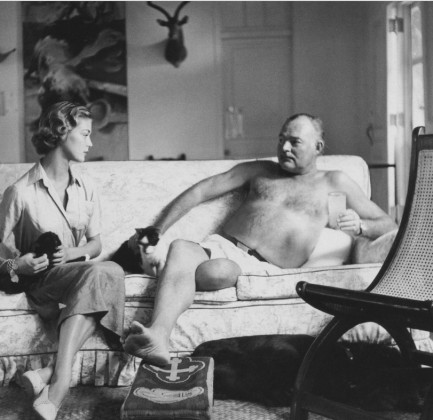 Fashion model Jean Patchett and author Ernest Hemingway, who habitually went shirtless, lounge at Finca Vigia, his house in Cuba, 1950.
Fashion model Jean Patchett and author Ernest Hemingway, who habitually went shirtless, lounge at Finca Vigia, his house in Cuba, 1950.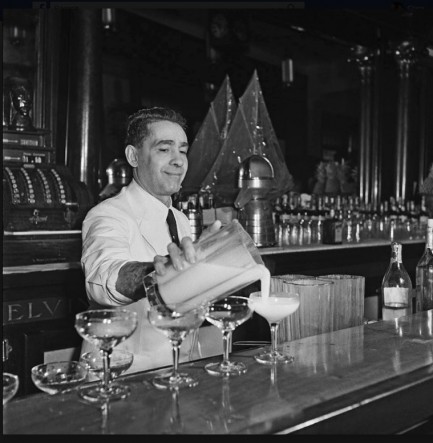 Above, Constantino Ribalaigua Vert, the "Cocktail King of Havana," inventor of the Papa Doble daiquiri, and owner of the famed bar La Floridita.
Above, Constantino Ribalaigua Vert, the "Cocktail King of Havana," inventor of the Papa Doble daiquiri, and owner of the famed bar La Floridita.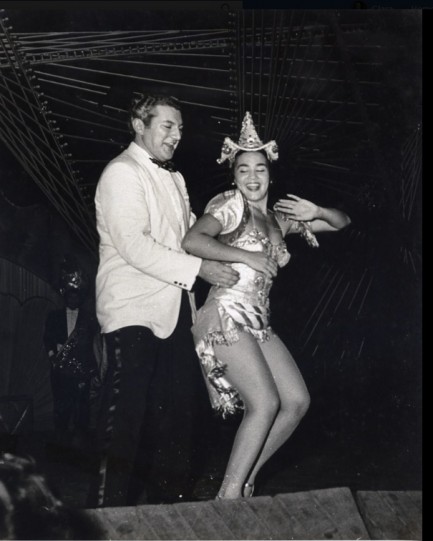
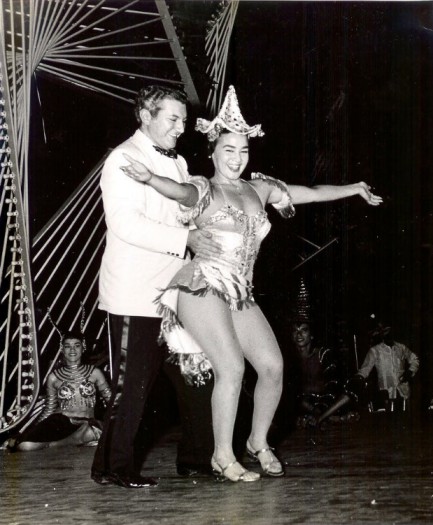 Liberace performs on stage at the Tropicana with headline dancer Ana Gloria Varona, 1954.
Liberace performs on stage at the Tropicana with headline dancer Ana Gloria Varona, 1954.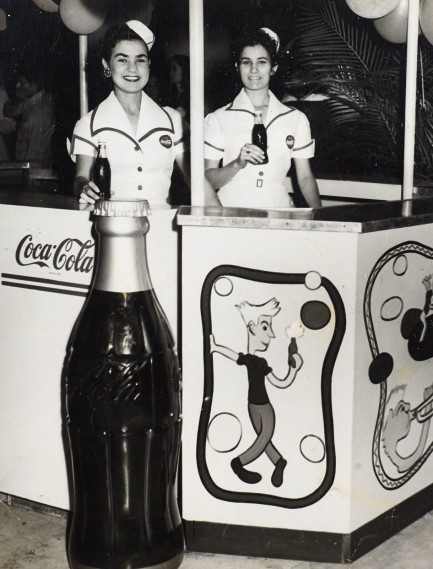 A Coke and a smile from two soft drink vendors.
A Coke and a smile from two soft drink vendors.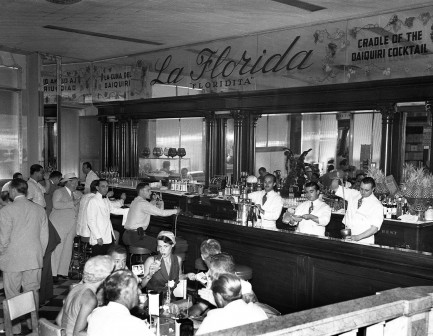 Patrons enjoy drinks at La Floridita, 1955.
Patrons enjoy drinks at La Floridita, 1955.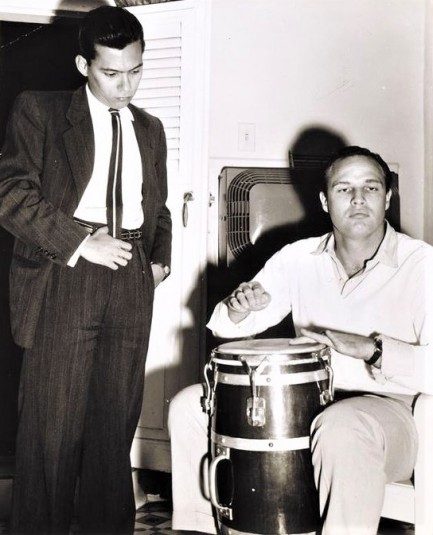 Cuban writer Guillermo Cabrera Infante stands by while Marlon Brando tries his hand—or both of them—at the conga drum at Hotel Packard, 1956.
Cuban writer Guillermo Cabrera Infante stands by while Marlon Brando tries his hand—or both of them—at the conga drum at Hotel Packard, 1956.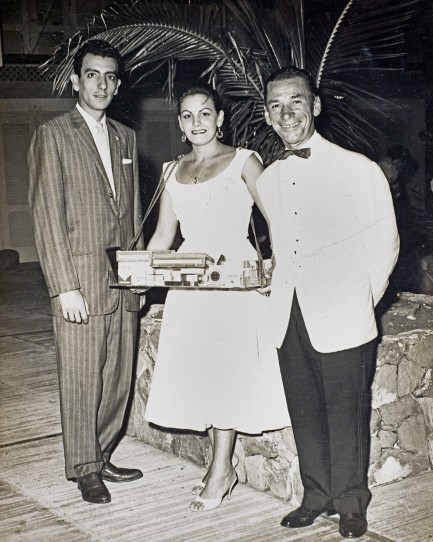 Mafia kingpin Meyer Lansky, on the right in this shot, attends the opening of the Hotel Riviera in December 1957.
Mafia kingpin Meyer Lansky, on the right in this shot, attends the opening of the Hotel Riviera in December 1957.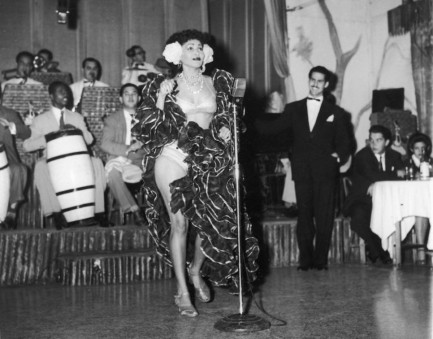 Famed entertainer Zulema dances the rhumba at the Zombie Club, 1946.
Famed entertainer Zulema dances the rhumba at the Zombie Club, 1946.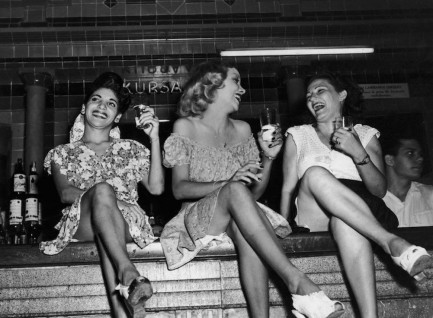 Three women liven up the room from their perch on the bar at Cabaret Kursal.
Three women liven up the room from their perch on the bar at Cabaret Kursal.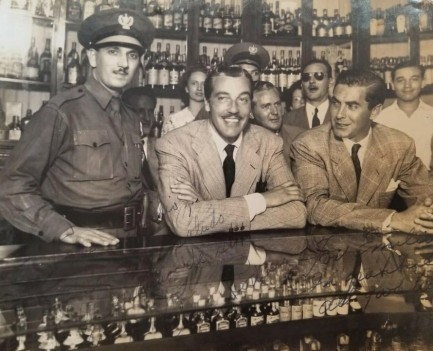 Cesar Romero and Tyrone Power enjoy a drink and a chat at Sloppy Joe's Bar.
Cesar Romero and Tyrone Power enjoy a drink and a chat at Sloppy Joe's Bar.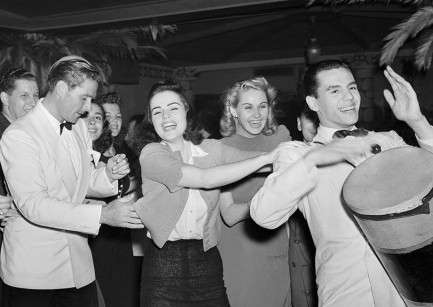 Revelers including Errol Flynn and Desi Arnaz, Jr. form a conga line during the Yoruba festival known as Dia de Babalú-Ayé.
Revelers including Errol Flynn and Desi Arnaz, Jr. form a conga line during the Yoruba festival known as Dia de Babalú-Ayé.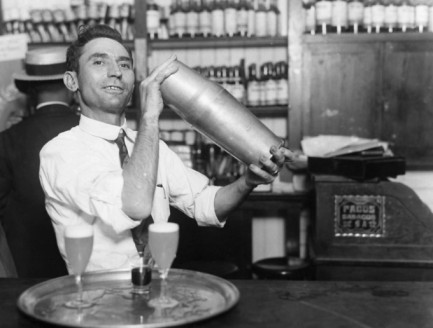 José Abeal Otero, founder of Sloppy Joe's Bar, mixes up a giant batch of liquid magic. No, this isn't the same person as above, Ribalaigua. They were both small, dapper guys.
José Abeal Otero, founder of Sloppy Joe's Bar, mixes up a giant batch of liquid magic. No, this isn't the same person as above, Ribalaigua. They were both small, dapper guys.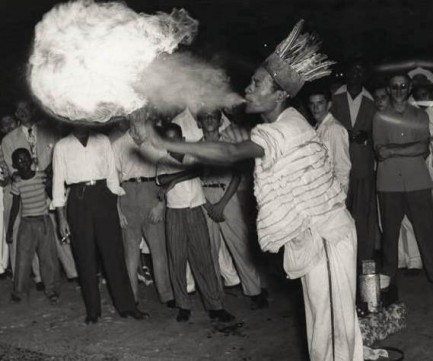 A firebreather thrills onlookers in front of the Saratoga Hotel, 1949.
A firebreather thrills onlookers in front of the Saratoga Hotel, 1949.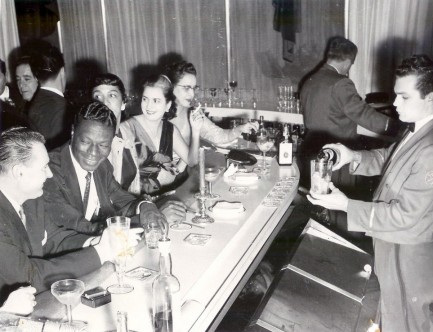 This photo shows Nat King Cole and his wife Maria Cole, along with Martin Fox, who was the owner of the Tropicana, accompanied by his wife Ofelia and an unknown fifth party.
This photo shows Nat King Cole and his wife Maria Cole, along with Martin Fox, who was the owner of the Tropicana, accompanied by his wife Ofelia and an unknown fifth party.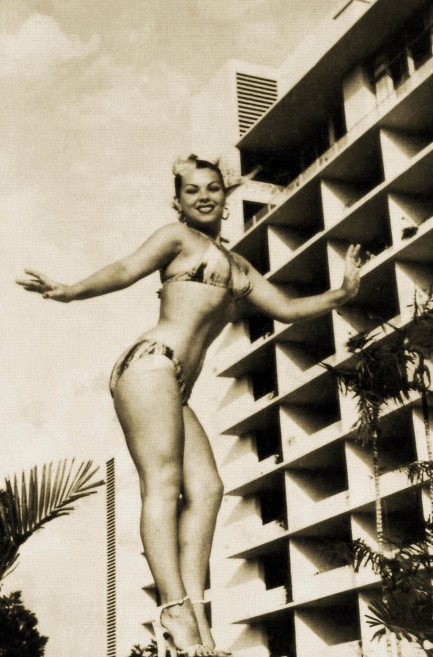 U.S. born vedette and movie star Tongolele, aka Yolanda Montes, poses outside the Capri Hotel and Casino, 1958.
U.S. born vedette and movie star Tongolele, aka Yolanda Montes, poses outside the Capri Hotel and Casino, 1958.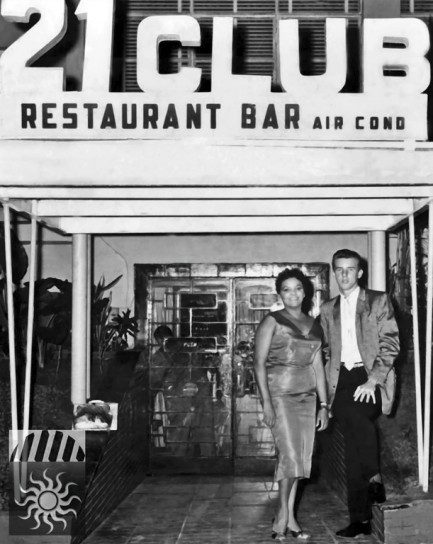 Meme Solis and Elena Burke pose at the entrance to the 21 Club, located in the Capri Hotel.
Meme Solis and Elena Burke pose at the entrance to the 21 Club, located in the Capri Hotel.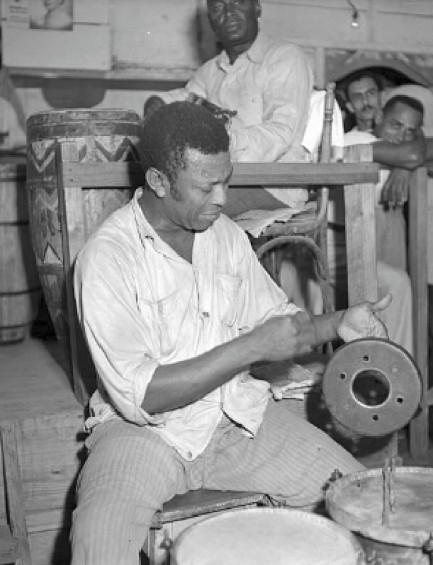
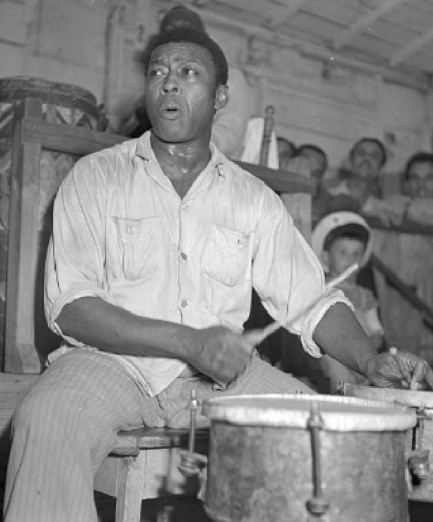 These photos show Silvano Chueg Echevarría, a master of percussion and an iconic musical personage. Let's go back to that Marlon Brando photo for a sec. Brando was an aficionado of percussive instruments. During that 1956 jaunt to Cuba he made it known that he wanted to buy drums from real percussionists. One of the musicians he met was Echevarría. All the Havana percussionists knew of Brando, of course, but thought he was a musical dilettante. At some point he finagled his way onto a nightclub stage, sat in with a band, and truly amazed onlookers with his ability on the conga. He wasn't a master, but he was pretty good. He won respect, and bought his drums.
These photos show Silvano Chueg Echevarría, a master of percussion and an iconic musical personage. Let's go back to that Marlon Brando photo for a sec. Brando was an aficionado of percussive instruments. During that 1956 jaunt to Cuba he made it known that he wanted to buy drums from real percussionists. One of the musicians he met was Echevarría. All the Havana percussionists knew of Brando, of course, but thought he was a musical dilettante. At some point he finagled his way onto a nightclub stage, sat in with a band, and truly amazed onlookers with his ability on the conga. He wasn't a master, but he was pretty good. He won respect, and bought his drums.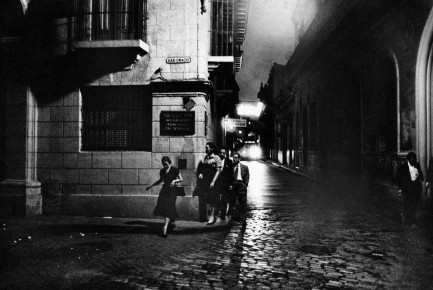 Raquel Revuelta, Manuel Corrales, and Mariano Rodriguez leave the famed bar Bodeguita del Medio and walk through the Havana night to other locales, other adventures, 1958.
Raquel Revuelta, Manuel Corrales, and Mariano Rodriguez leave the famed bar Bodeguita del Medio and walk through the Havana night to other locales, other adventures, 1958.CubaHavanaTropicanaErnest HemingwayJean PatchettLiberaceNat King ColeMaria ColeOfelia FoxMartin FoxTongoleleYolanda MontesAna Gloria VaronaMarlon BrandoGuillermo Cabrera InfanteCesar RomeroTyrone PowerMeyer LanskyRaquel RevueltaManuel CorralesMariano RodriguezJosé Abeal OteroConstantno Ribalaigua VertSilvano Chueg EchevarríaErrol FlynnDesi Arnaz Jr.mafia
| The Naked City | Sep 7 2020 |

Man tries to catch train, train catches him instead.
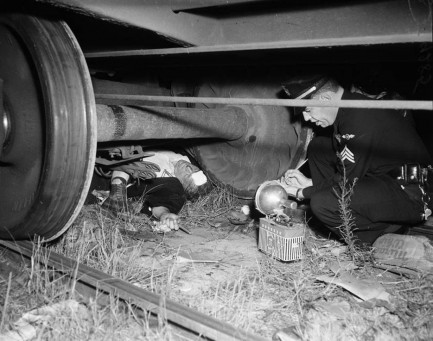
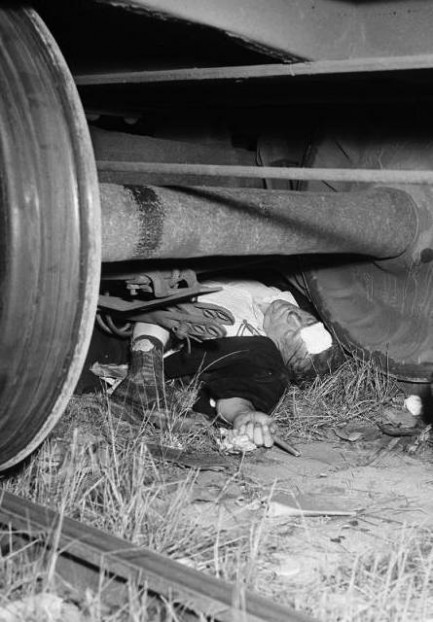
These photos show an unfortunate man named John Heldt, Jr. trapped under a Pacific Electric freight car in Gardena, California. Getty Images has this listed as happening August 7, 1951, but the USC digital film archive where the image is stored has the date as today. We trust USC over Getty, but whenever it happened, it was a bad day for Heldt, maybe not the worst of his life, but certainly in the top five, we can be sure. His rescuers had to bring in special equipment to lift the train off him, so he was probably pinned for hours, his indignity compounded by the fact that a Los Angeles Examiner photographer made these snaps of him. “Can you hold that pose? Heh heh, that's a joke, see, because you can't move at all, you poor, stupid sap!” There's no info on whether Heldt recovered, nor whether he lost any body parts. Still, as bad as this looks, it's better than flying Ryanair.
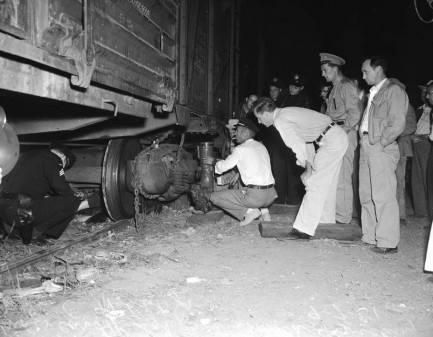
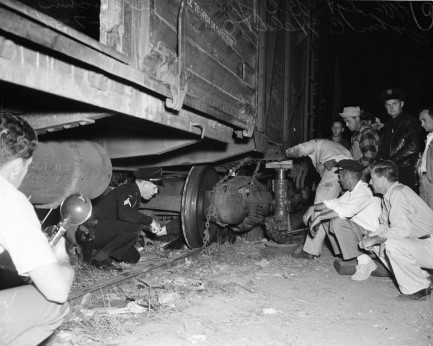
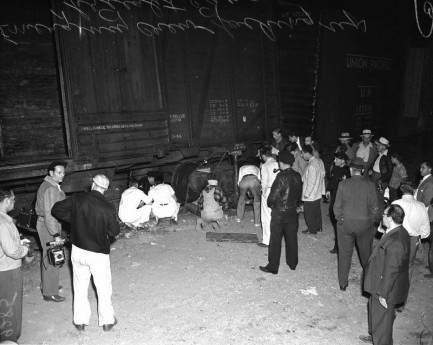
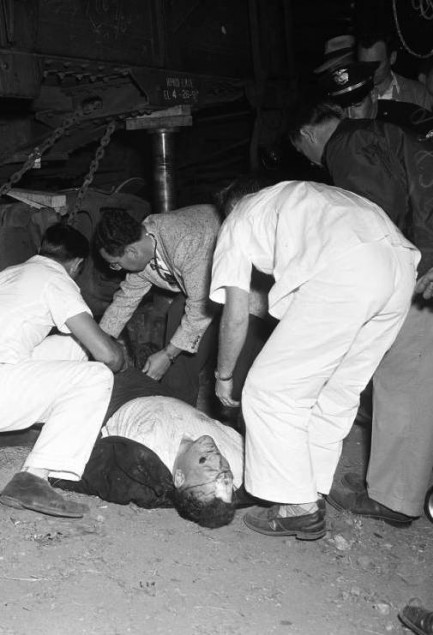
| Vintage Pulp | May 17 2020 |

Kiss me and I'll kiss you back.
Below, another collection of covers featuring characters expressing a little affection, a continuation of the lip locks we put together way back in 2013, and an adjunct to our collection of Harry Barton neck kisses from 2017. 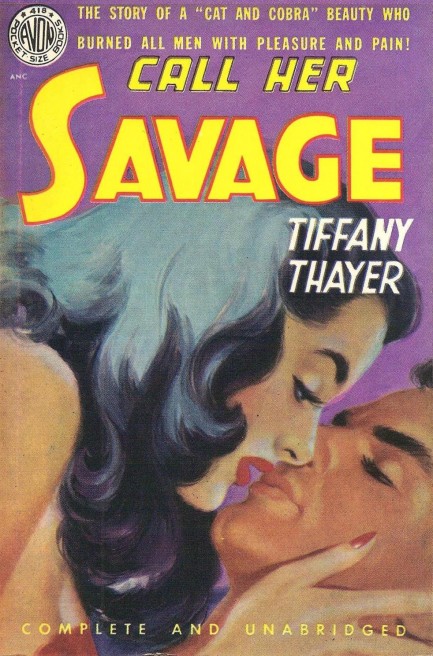
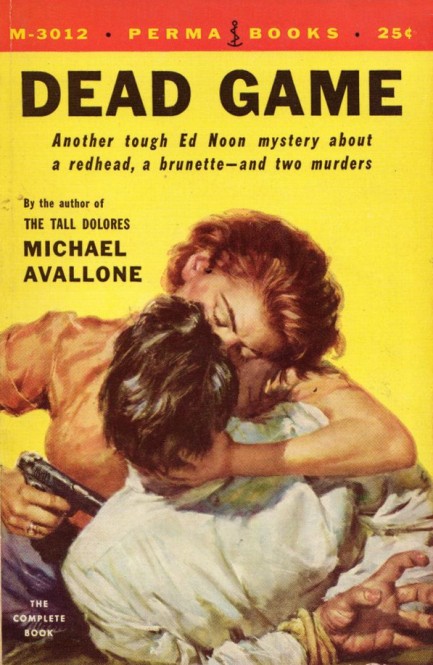
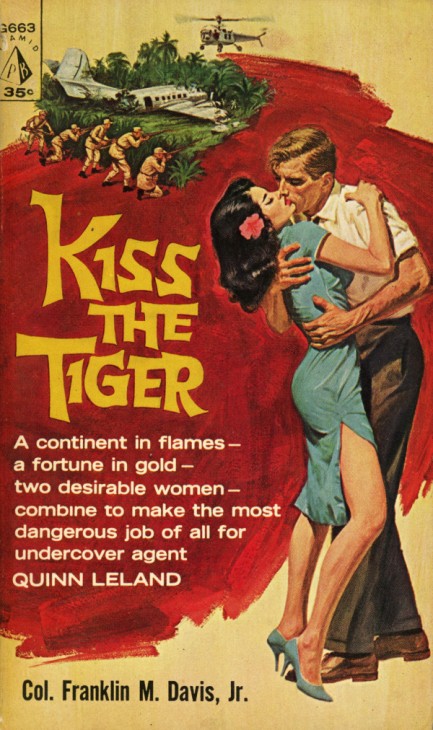
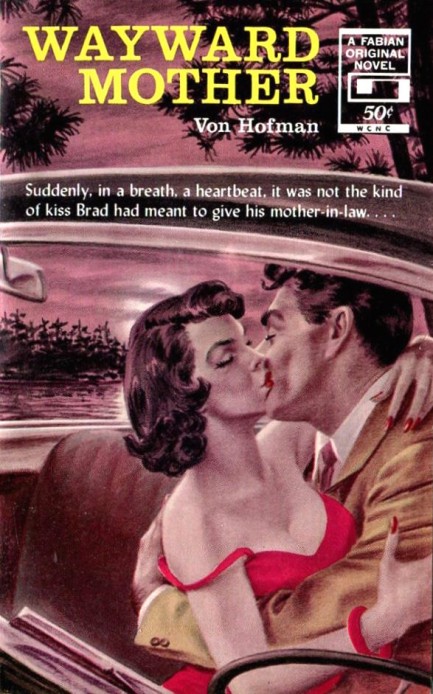
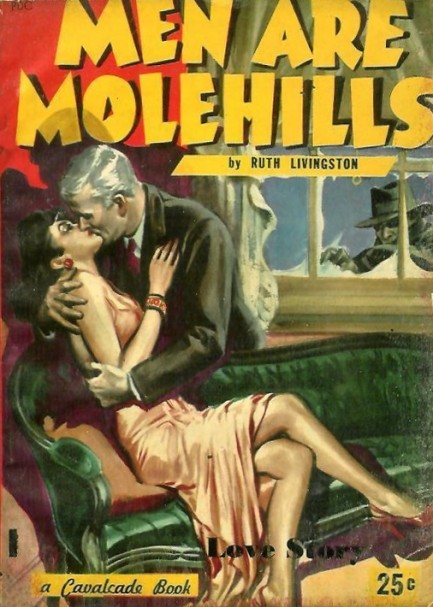
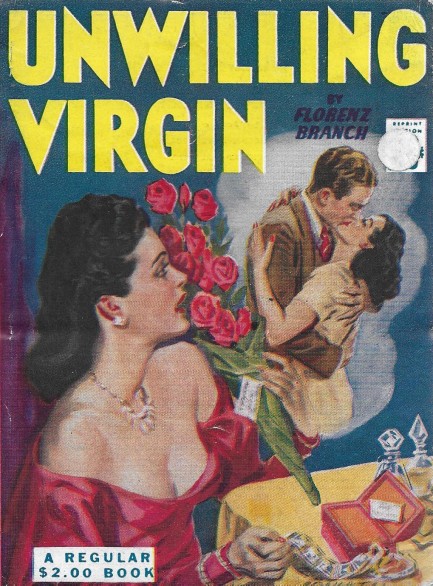
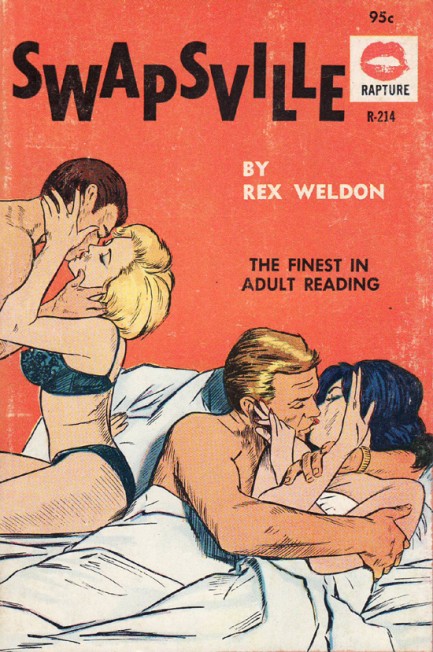
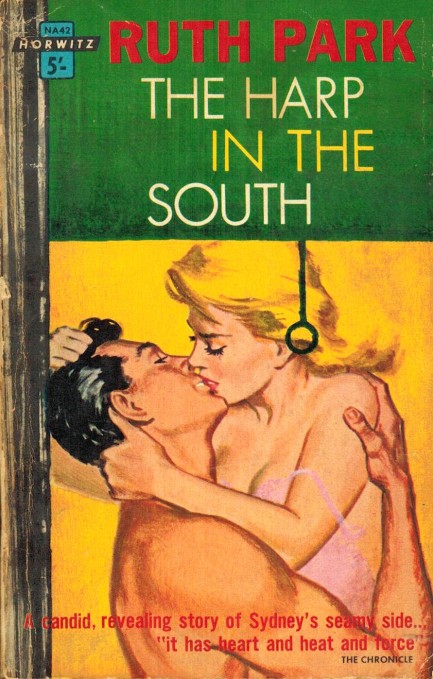
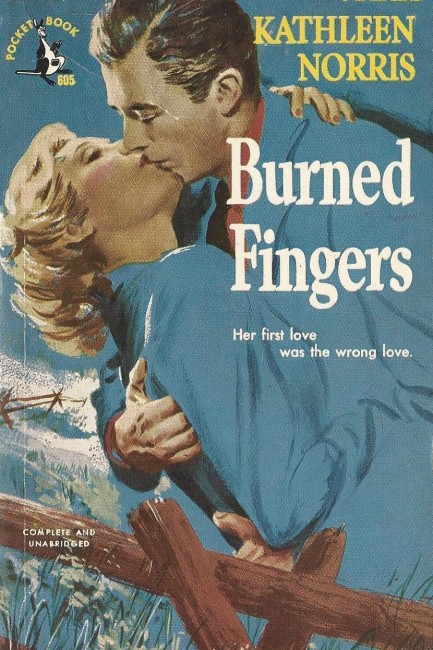
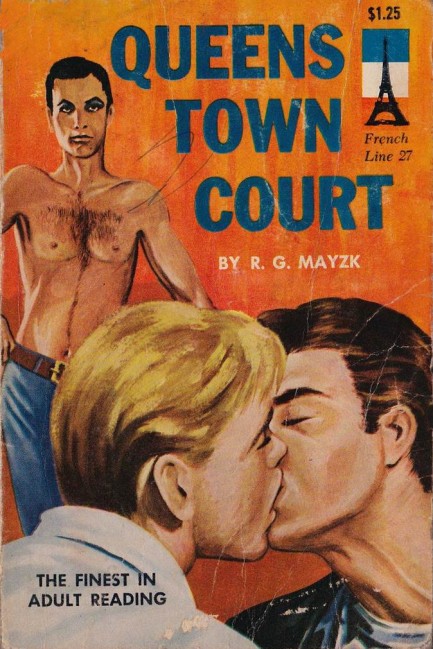
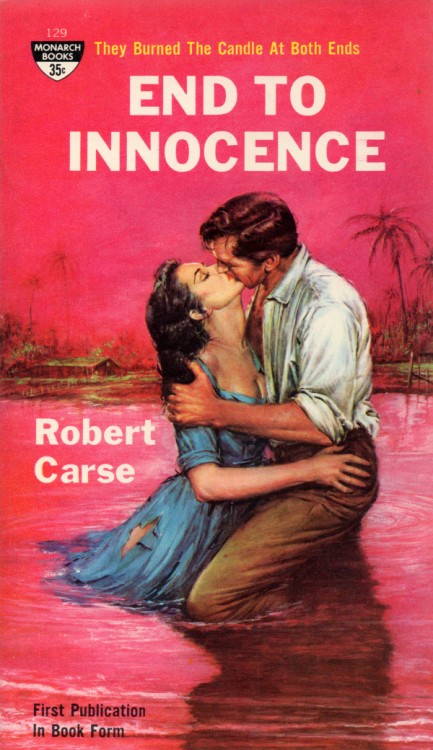
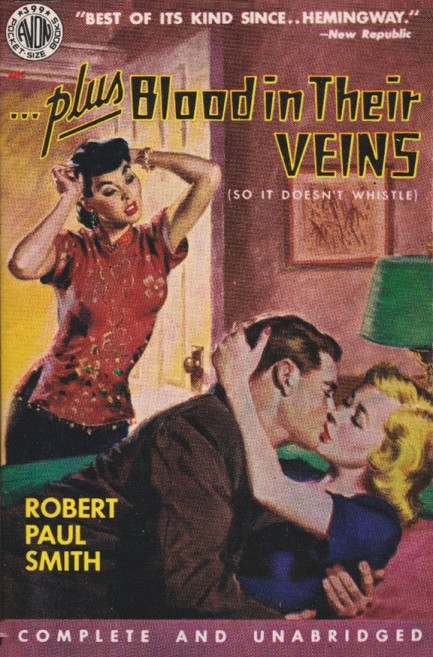
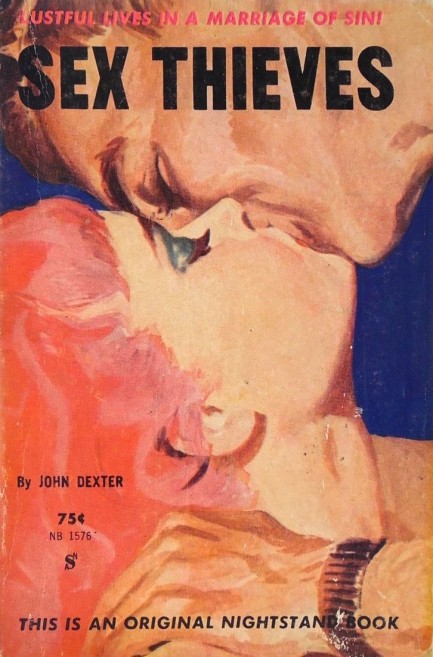
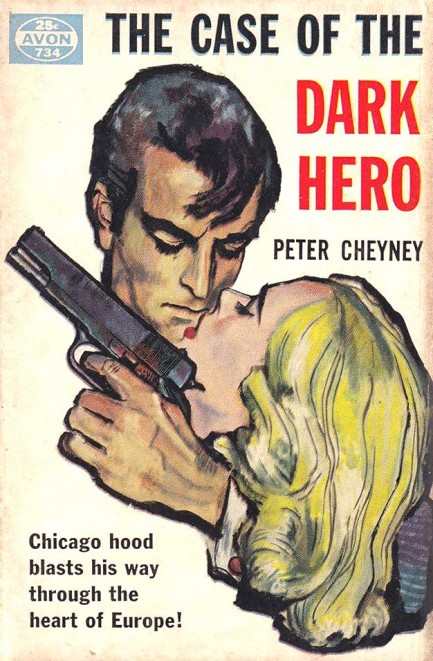
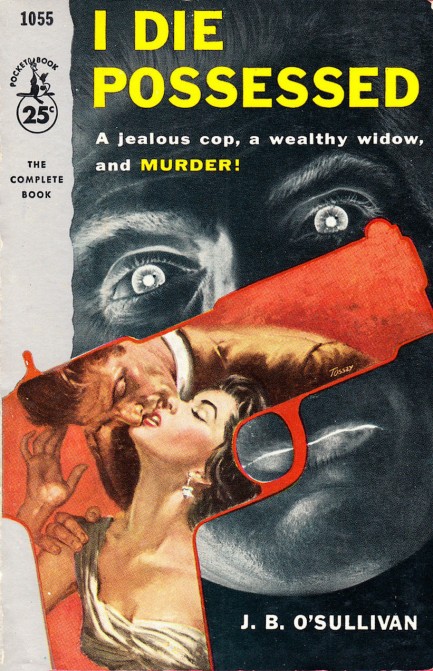
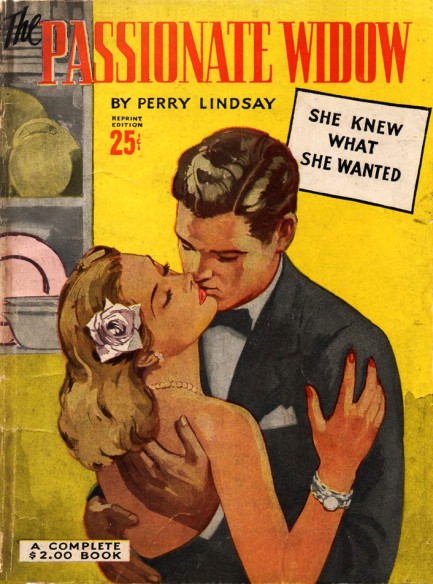
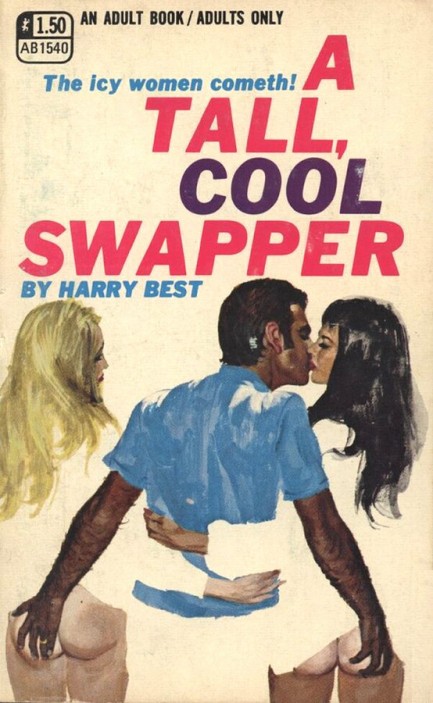
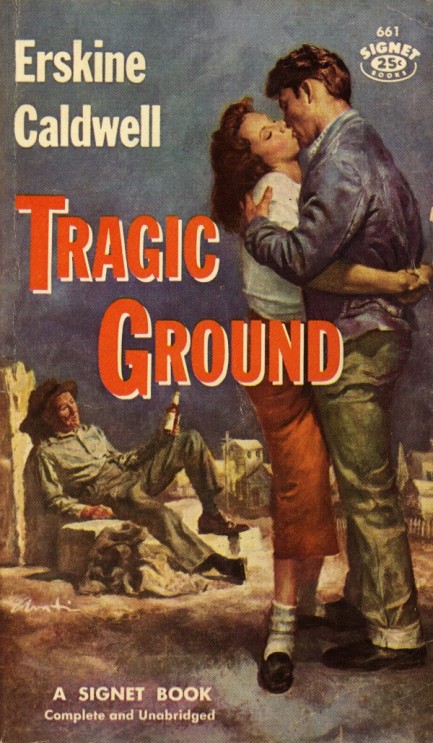
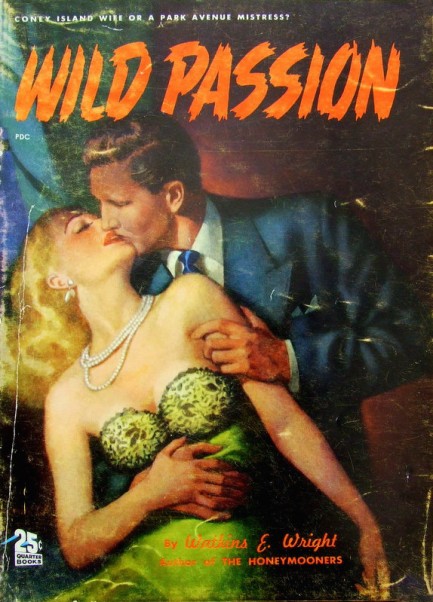
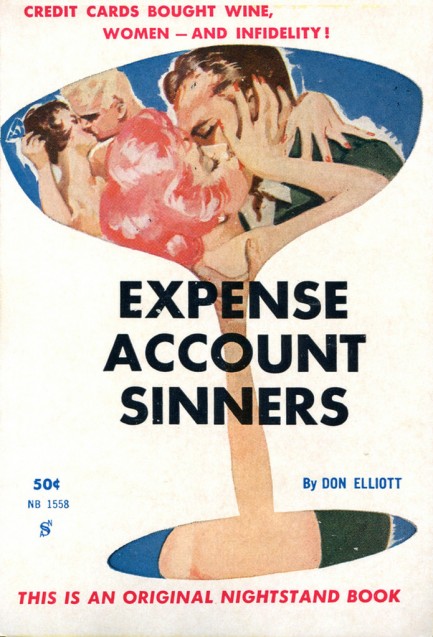
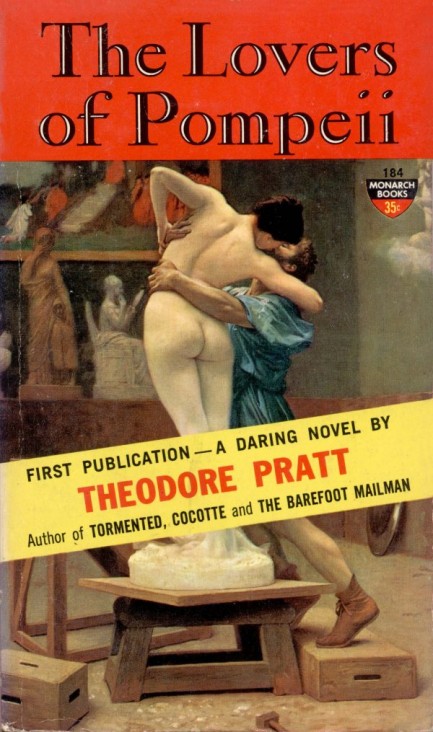
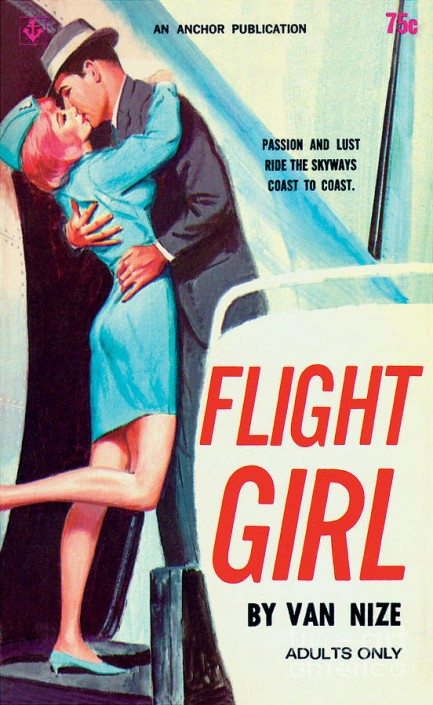
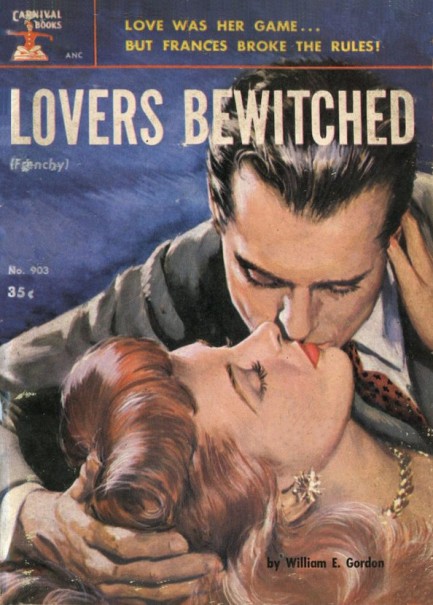
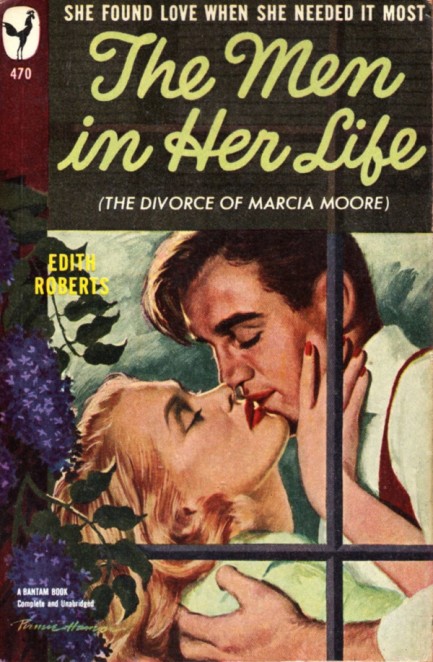
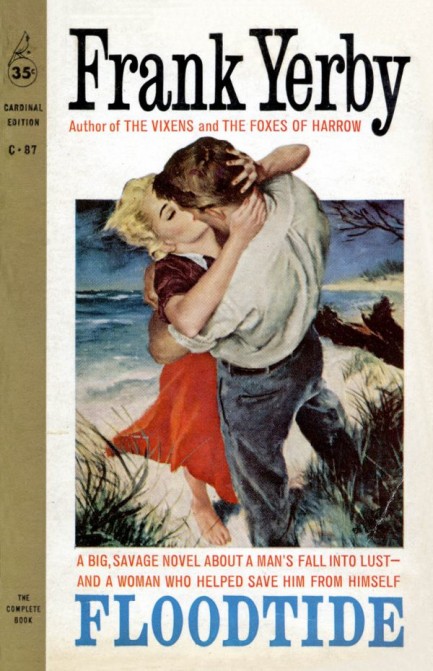
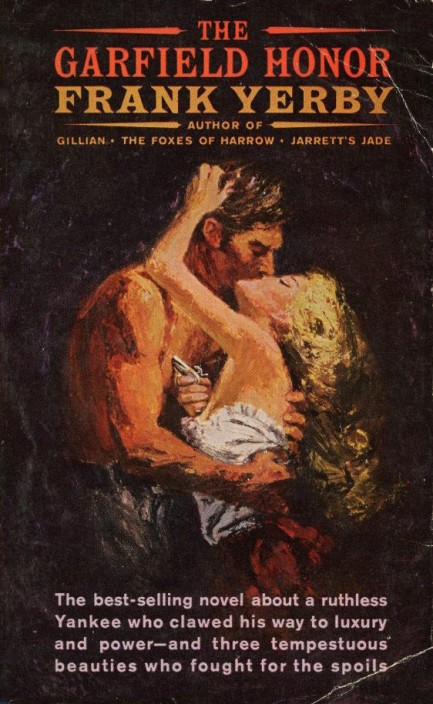
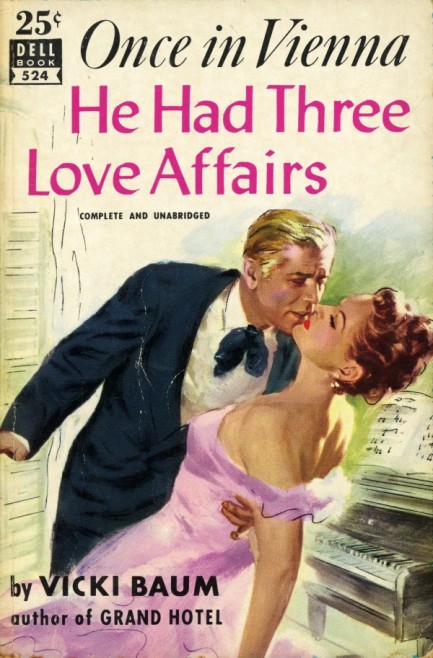
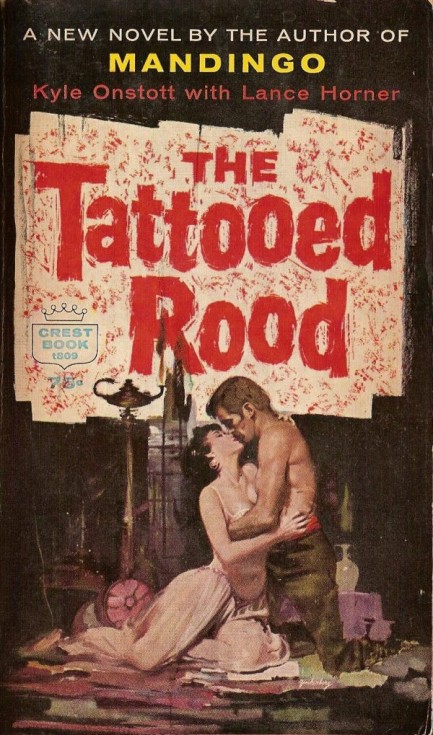
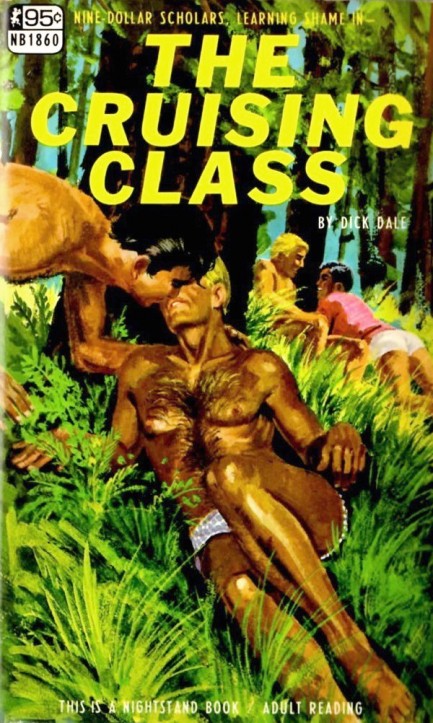
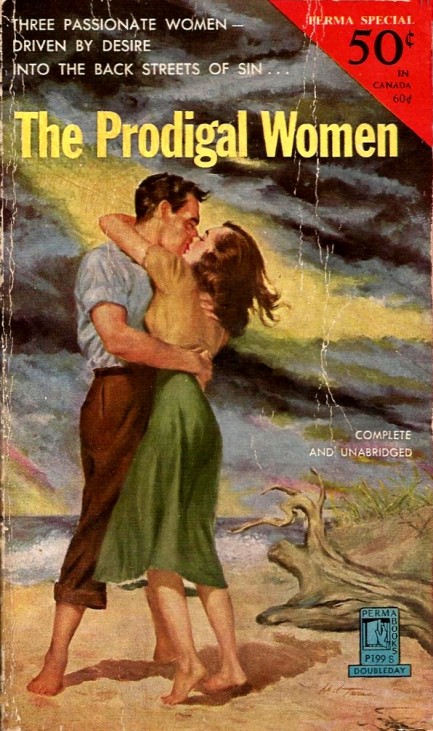
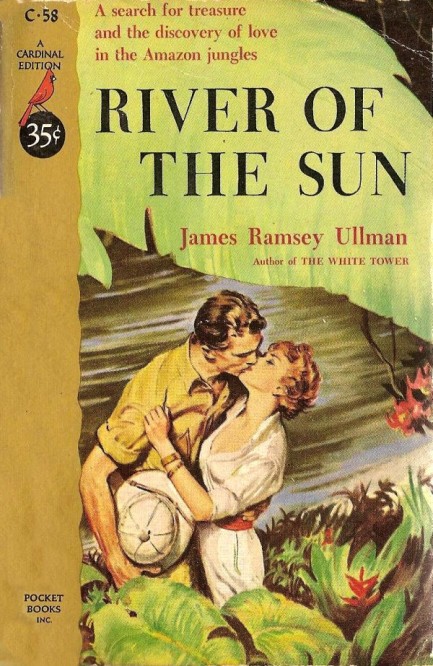
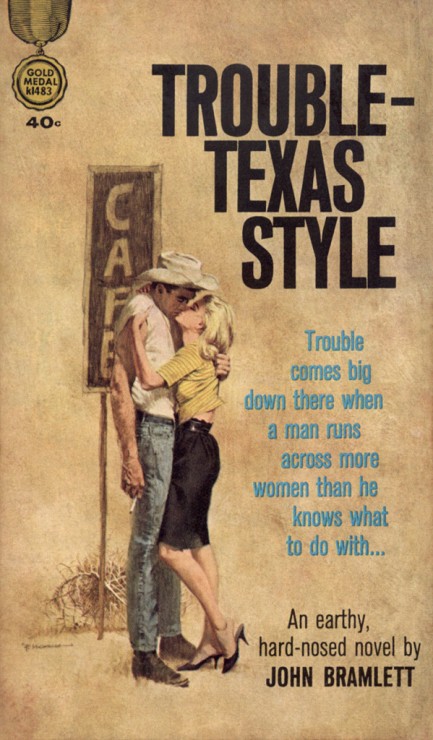
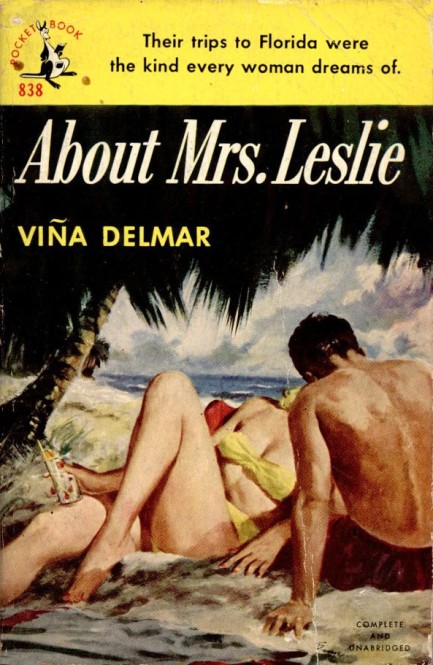
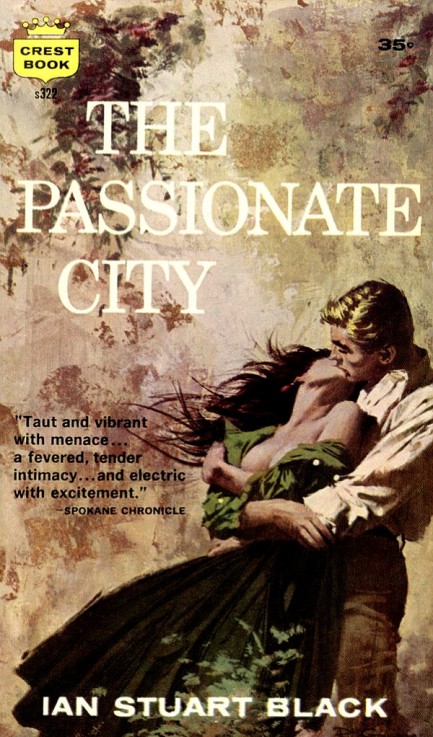
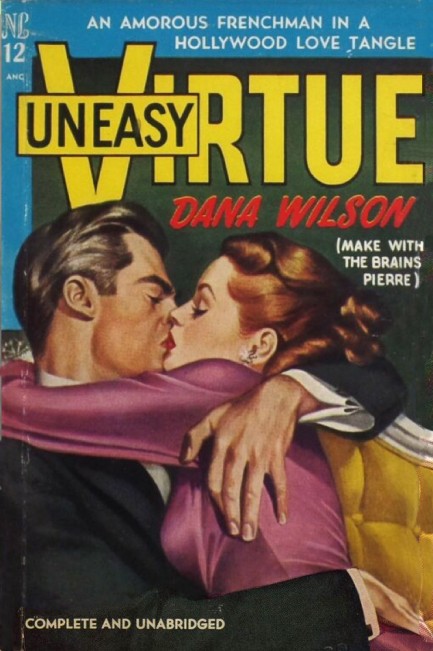
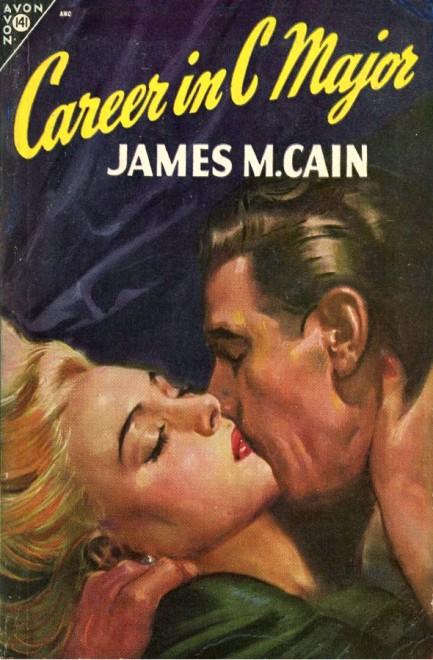
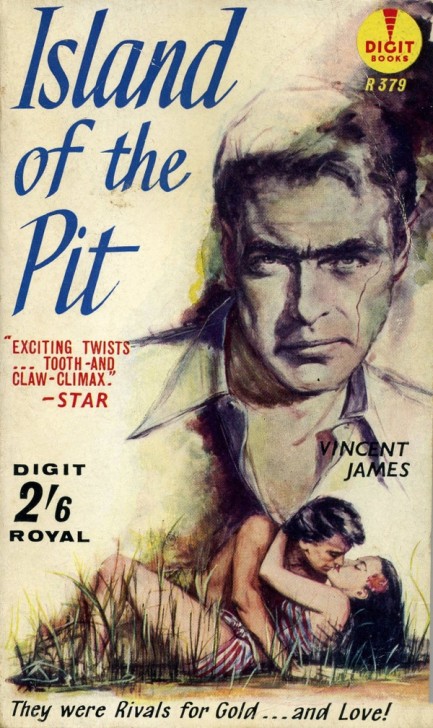
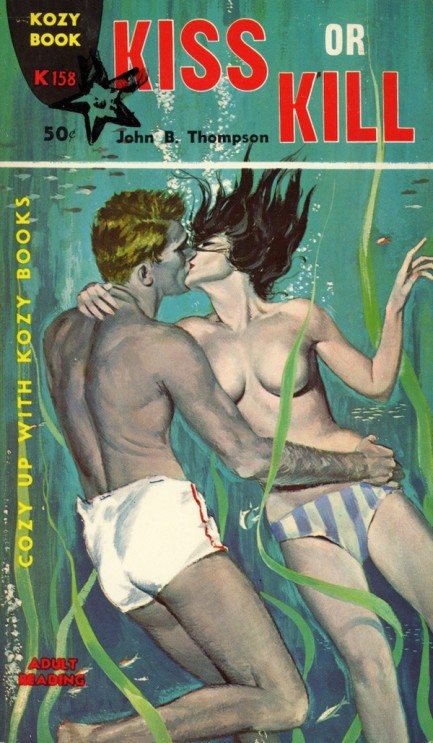
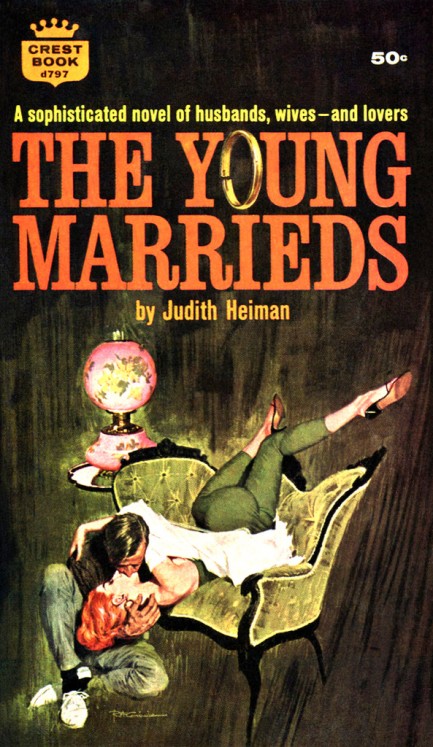
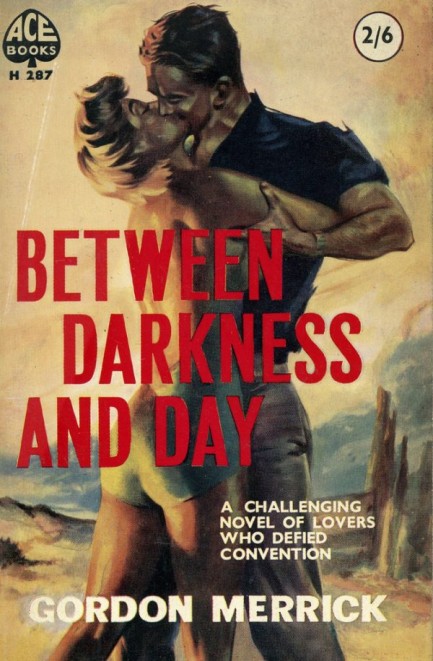
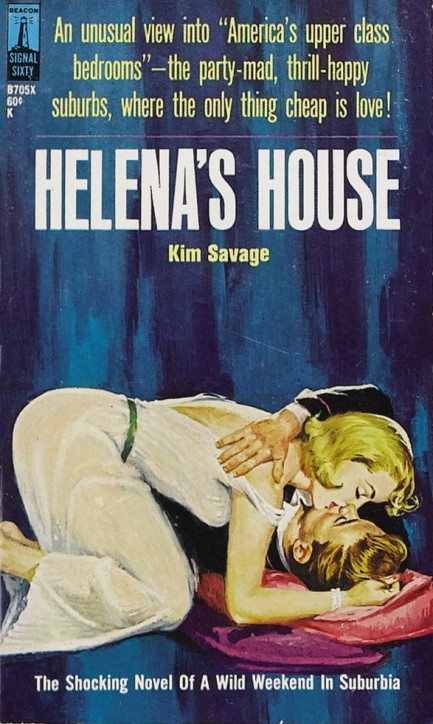
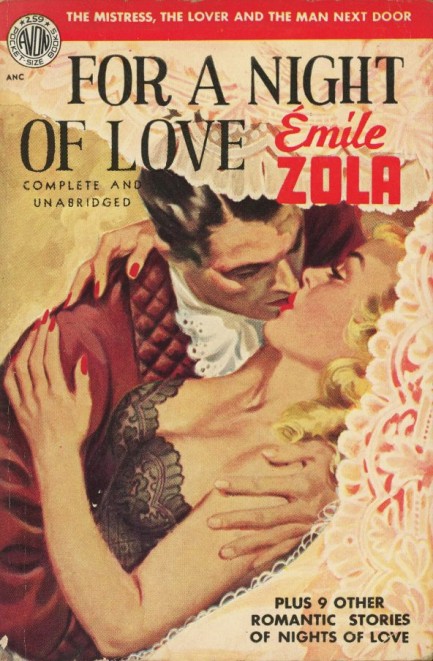
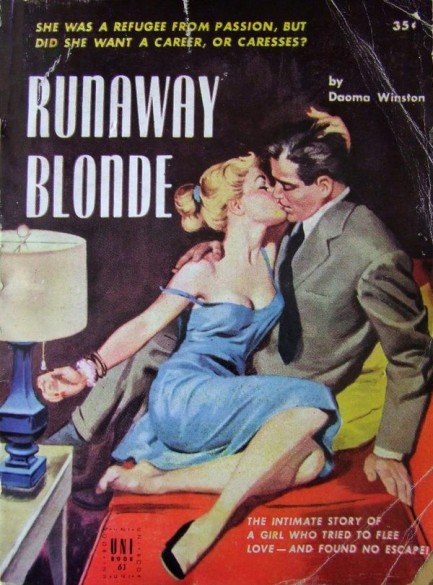
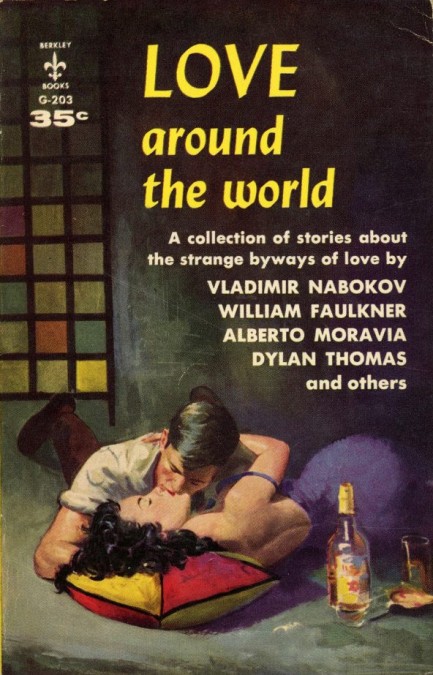
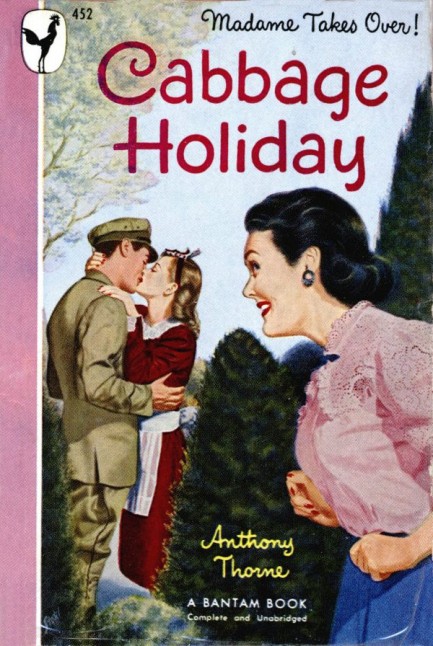
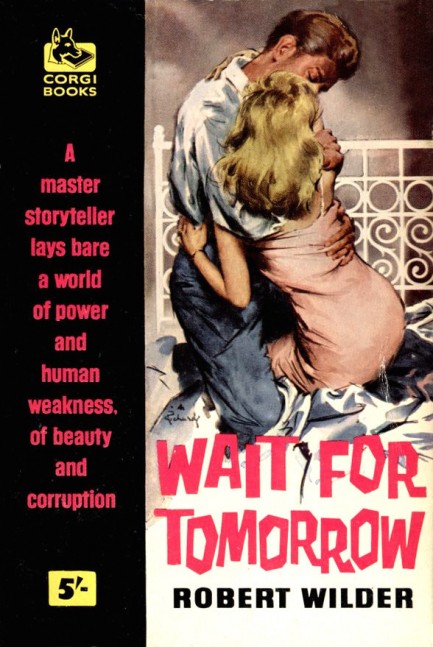
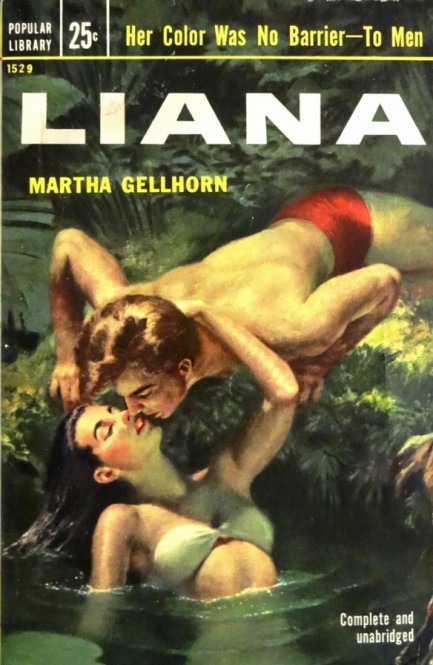
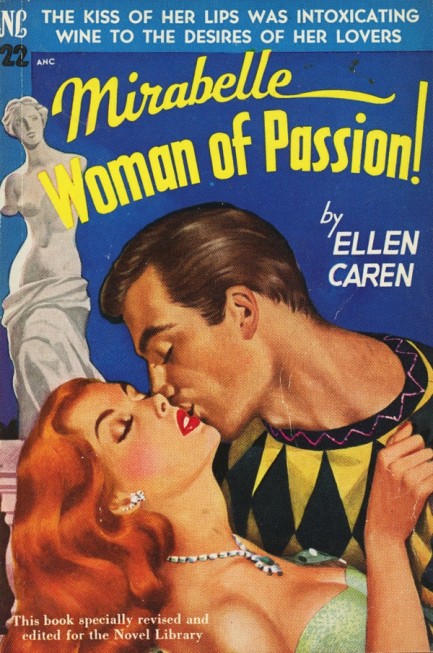
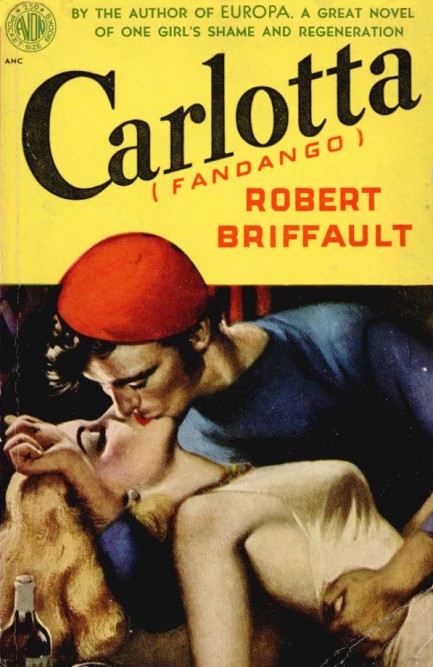
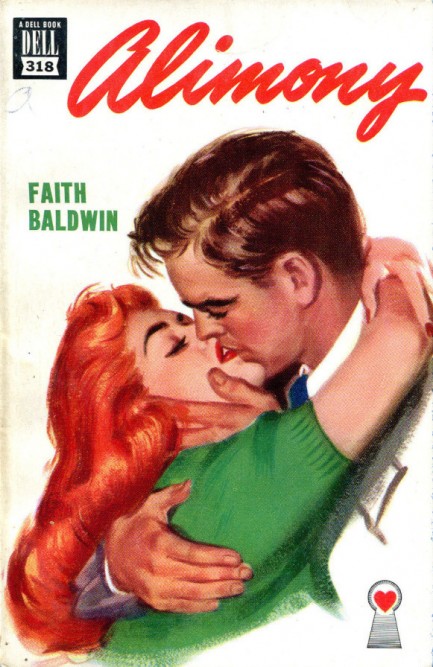
Tiffany ThayerMichael AvalloneFranklin M. Davis Jr.Von HoffmanRuth LivingstonFlorenz BranchRex WeldonRuth ParkKathleen NorrisR. G. MayzkRobert CarseRobert Paul SmithJohn DexterPeter CheyneyJ.B. O'SullivanPerry LindsayHarry BestErskine CaldwellWatkins E. WrightDon ElliottVan NizeWilliam E. GordonEdith RobertsFrank YerbyKyle OnstottLance HornerDick DaleVicki BaumNancy HaleJohn BramlettJames Ramsey UllmanViña DelmarIan Stuart BlackDana WilsonJames M. CainJohn B. ThompsonJudith HeimanGordon MerrickKim SavageDaoma WinstonVladimir NabokovWilliam FaulknerAlberto MoraviaDylan ThomasÉmile ZolaRobert WilderMartha GellhornEllen CarenRobert BriffaultAnthony ThorneTheodore PrattVincent JamesFaith Baldwincover artcover collectionliterature
| Intl. Notebook | May 12 2020 |

Hitchcock says no festival for you this year!
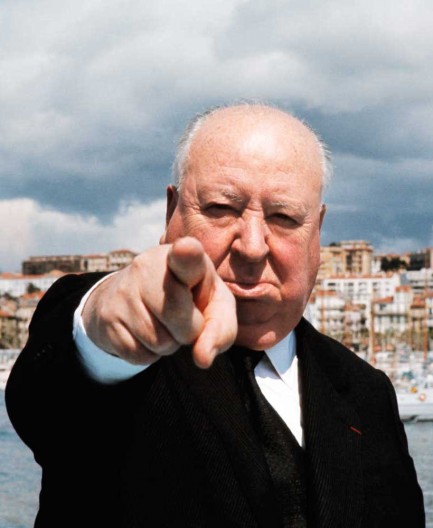
The 73rd edition of the Festival de Cannes, aka the Cannes Film Festival, would have kicked off today in the south of France, but was cancelled a while back. It's just one of a wave of event cancellations that will cascade through the year. Festivals as diverse as Burning Man and San Fermin, aka the Running of the Bulls, have also been shelved. But getting back to Cannes, we thought this would be a good moment to commemorate past fests with some historical photos. Above you see Alfred Hitchcock on a boat with the town in the background, in 1972, and below are about fifty pix from the 1940s through 1970s, documenting various iconic moments, and a few quieter ones. Maybe the Cannes Film Festival will back next year, maybe not. At this point, predicting anything is an exercise in futility. But at least we'll always have the memories.
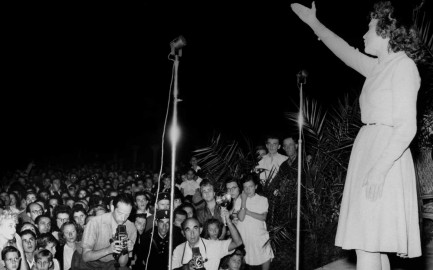
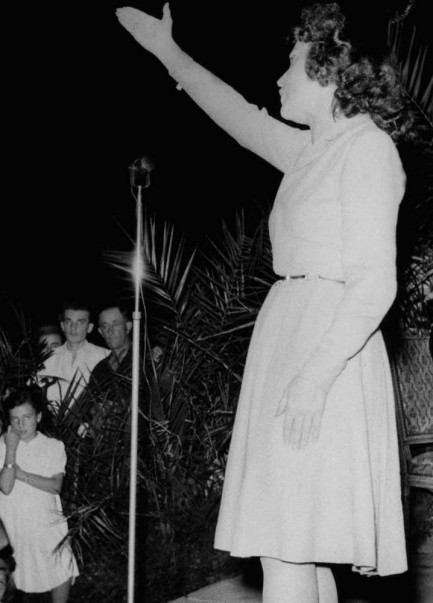 Edith Piaf sings on the terrace of the Carlton Hotel on the iconic Boulevard de la Croisette at the first Festival de Cannes to be held under that name, in 1946. Back then the event took place in September and October, but would shift to May a bit later.
Edith Piaf sings on the terrace of the Carlton Hotel on the iconic Boulevard de la Croisette at the first Festival de Cannes to be held under that name, in 1946. Back then the event took place in September and October, but would shift to May a bit later.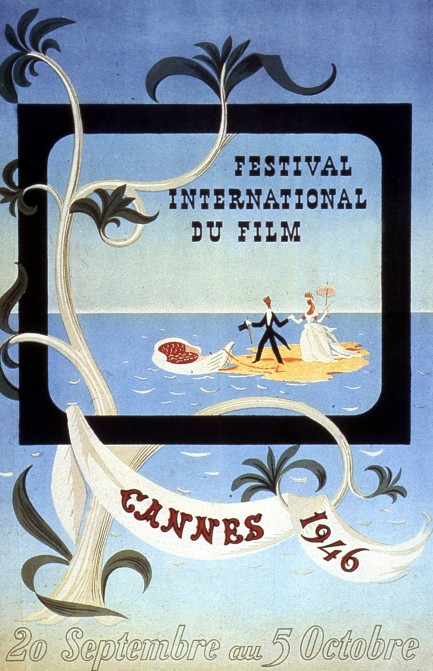
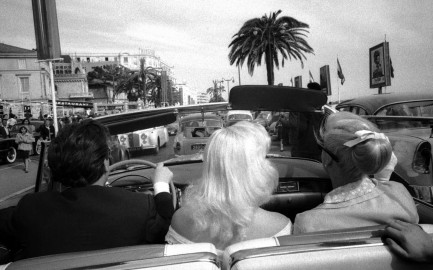 Diana Dors and Ginger Rogers arrive at the fest the only way anyone should—breezing along the beachfront in a convertible, in 1956, with an unknown driver.
Diana Dors and Ginger Rogers arrive at the fest the only way anyone should—breezing along the beachfront in a convertible, in 1956, with an unknown driver.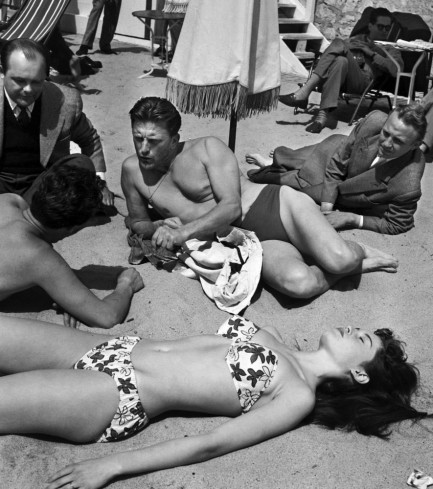 Kirk Douglas holds court on the beach in 1953, and Brigitte Bardot soaks up rays in the foreground.
Kirk Douglas holds court on the beach in 1953, and Brigitte Bardot soaks up rays in the foreground.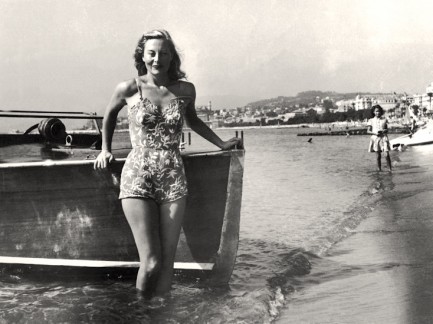 Michele Morgan poses at the first Festival in 1946. Photo ops of this sort were essential sources of publicity for stars, and would soon become opportunities for non-stars seeking to be discovered.
Michele Morgan poses at the first Festival in 1946. Photo ops of this sort were essential sources of publicity for stars, and would soon become opportunities for non-stars seeking to be discovered.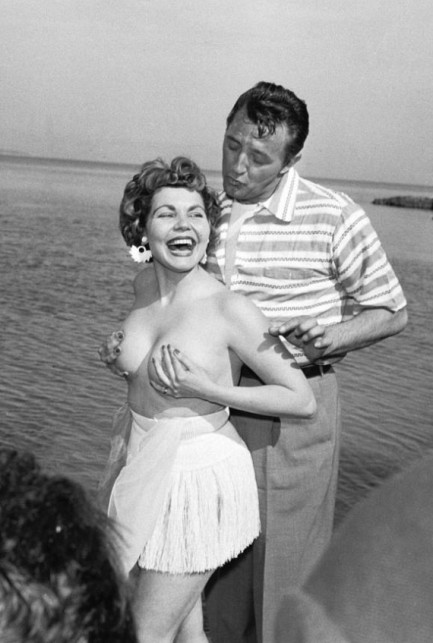 Case in point. Robert Mitchum poses with actress Simone Sylva in 1954. Sylva was allegedly not supposed to be there, but shucked her top and photo-bombed Douglas in an attempt to raise her profile. It didn't work. She made only a couple of credited movie appearances after her topless stunt.
Case in point. Robert Mitchum poses with actress Simone Sylva in 1954. Sylva was allegedly not supposed to be there, but shucked her top and photo-bombed Douglas in an attempt to raise her profile. It didn't work. She made only a couple of credited movie appearances after her topless stunt.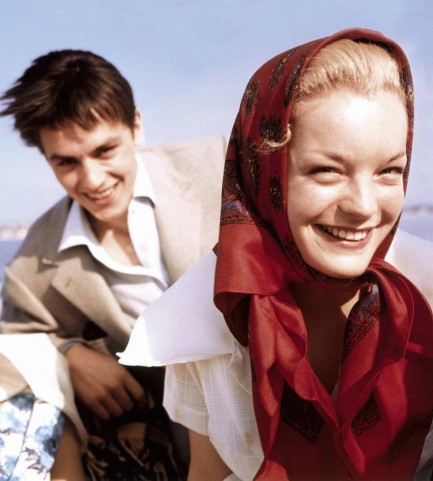 Romy Schneider and Alain Delon at the 1959 fest.
Romy Schneider and Alain Delon at the 1959 fest.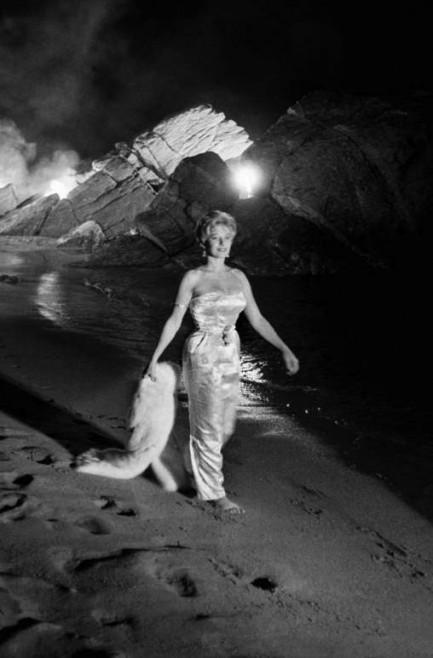 An unidentified model or actress poses in the style of Anita Ekberg from La dolce vita in 1960. This looks like it was shot at Plage du Midi, which is a beach located a little ways west of the Cannes town center.
An unidentified model or actress poses in the style of Anita Ekberg from La dolce vita in 1960. This looks like it was shot at Plage du Midi, which is a beach located a little ways west of the Cannes town center. A unidentified partygoer is tossed into a swimming pool after La Dolce Vita won the the 1960 Palme d’Or. The Festival is almost as well known for legendary parties as for legendary film premieres.
A unidentified partygoer is tossed into a swimming pool after La Dolce Vita won the the 1960 Palme d’Or. The Festival is almost as well known for legendary parties as for legendary film premieres.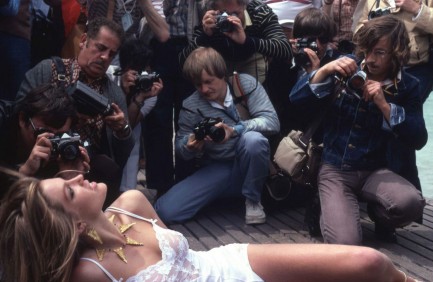
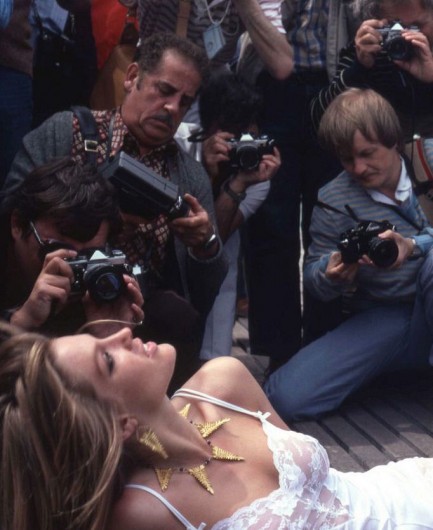 Another unidentified model or actress poses on the boardwalk in 1979. Generally, you don't have to be known to draw a crowd of photographers—you just have to be nearly bare. She's wearing lingerie, so that explains the interest, though this is modest garb for a Cannes publicity stunt. It's never a surprise to see a headline-seeking film hopeful strip all the way down to a string ficelle féminin, or thong, which is the limit of what is legal in Cannes
Another unidentified model or actress poses on the boardwalk in 1979. Generally, you don't have to be known to draw a crowd of photographers—you just have to be nearly bare. She's wearing lingerie, so that explains the interest, though this is modest garb for a Cannes publicity stunt. It's never a surprise to see a headline-seeking film hopeful strip all the way down to a string ficelle féminin, or thong, which is the limit of what is legal in Cannes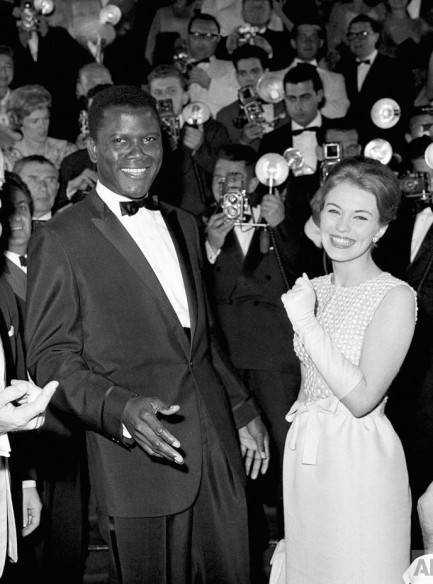 Sidney Poitier and Jean Seberg have a laugh in 1961. This was the year Poitier's flick Paris Blues was released, so it's possible he had jetted down from the capital for the Festival.
Sidney Poitier and Jean Seberg have a laugh in 1961. This was the year Poitier's flick Paris Blues was released, so it's possible he had jetted down from the capital for the Festival.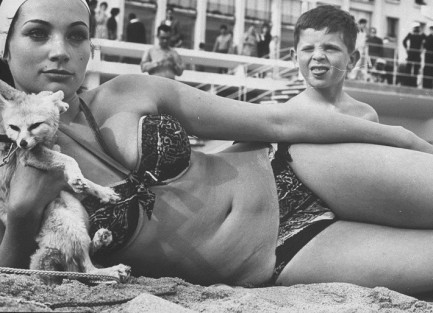 Philomène Toulouse relaxes on the sand in 1962 while a boy practices the classic French look of disgust he'll be using the rest of his life.
Philomène Toulouse relaxes on the sand in 1962 while a boy practices the classic French look of disgust he'll be using the rest of his life. Actor Bernard Blier, 1975.
Actor Bernard Blier, 1975.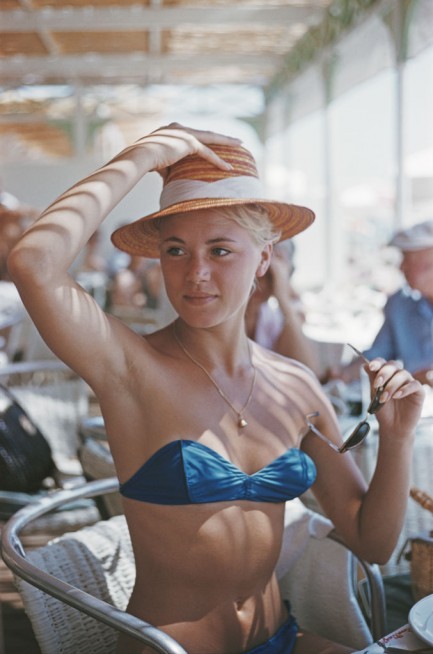 An unidentified bikini wearer boldly enjoys a lunch in a café on the Croisette, 1958.
An unidentified bikini wearer boldly enjoys a lunch in a café on the Croisette, 1958.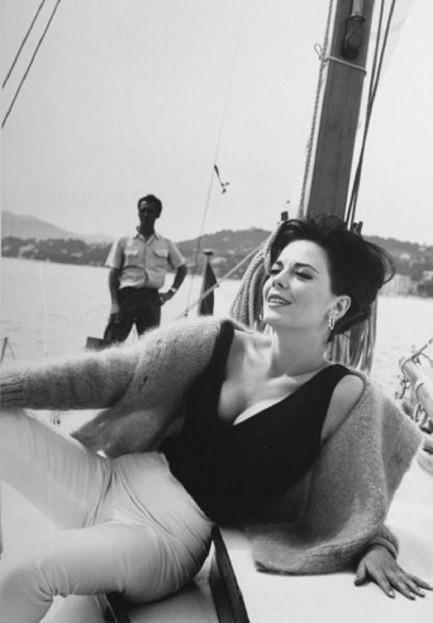 Natalie Wood aboard a sailboat in 1962.
Natalie Wood aboard a sailboat in 1962.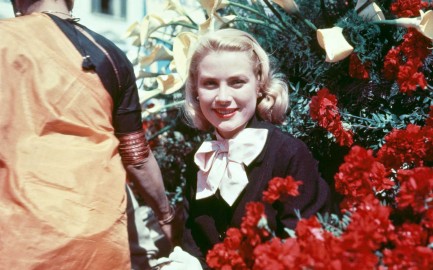
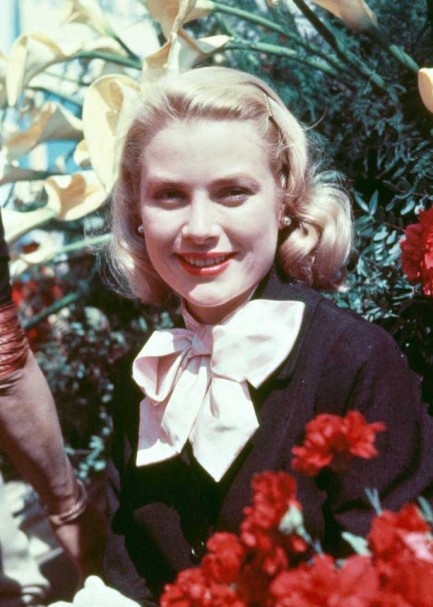 Grace Kelly, 1955.
Grace Kelly, 1955.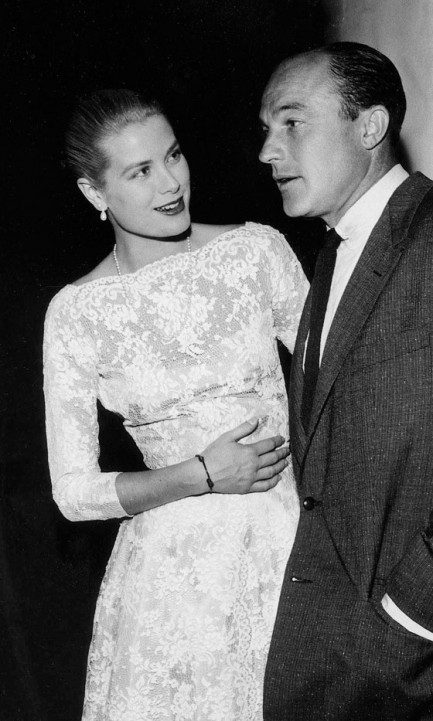 Kelly times two—Grace Kelly and Gene Kelly, hanging out, also in 1955.
Kelly times two—Grace Kelly and Gene Kelly, hanging out, also in 1955.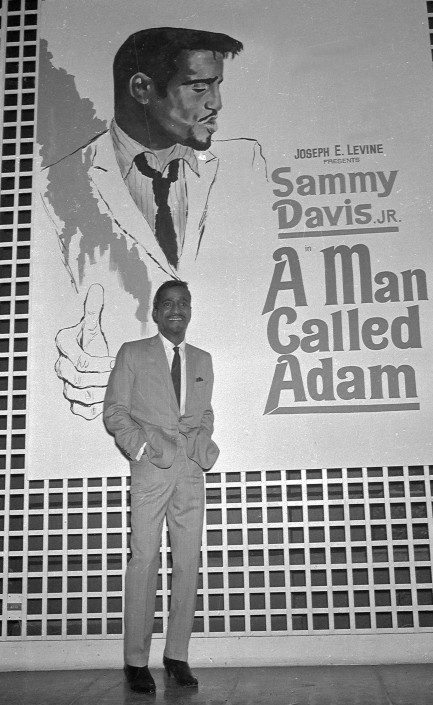 Sammy Davis, Jr. poses in front of a billboard promoting his film A Man Called Adam, 1966.
Sammy Davis, Jr. poses in front of a billboard promoting his film A Man Called Adam, 1966.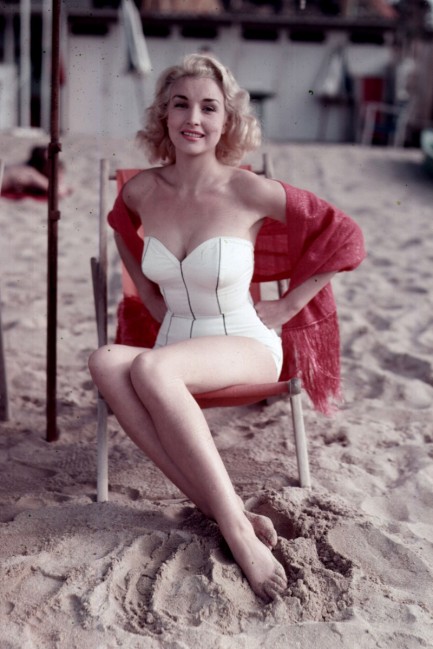 Joan Scott gets sand between her toes in 1955. Scott is obscure. She isn't even the most famous Joan Scott anymore. The IMDB entry for the only Joan Scott near the appropriate age is for an actress born in 1920 who didn't begin acting until 1967. The Joan Scott above doesn't look thirty-five, though, and we doubt she would have been the subject of this somewhat well-known photo without parlaying it into a film appearance before twelve years had passed. So we don't think this is the Joan Scott referenced on IMDB.
Joan Scott gets sand between her toes in 1955. Scott is obscure. She isn't even the most famous Joan Scott anymore. The IMDB entry for the only Joan Scott near the appropriate age is for an actress born in 1920 who didn't begin acting until 1967. The Joan Scott above doesn't look thirty-five, though, and we doubt she would have been the subject of this somewhat well-known photo without parlaying it into a film appearance before twelve years had passed. So we don't think this is the Joan Scott referenced on IMDB.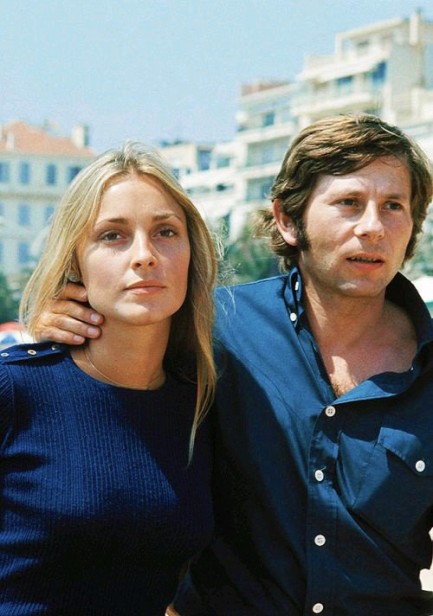
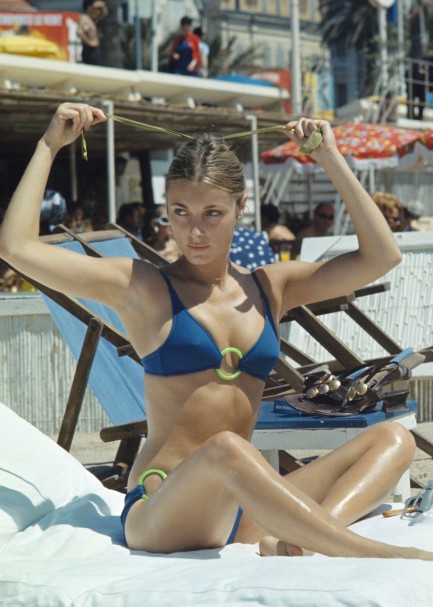 Sharon Tate, with Roman Polanski, and solo, 1968.
Sharon Tate, with Roman Polanski, and solo, 1968.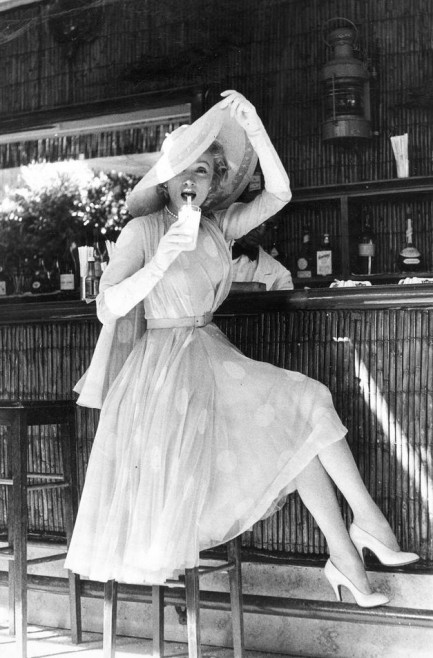 Marlene Dietrich brings glamour to a tiki themed bar in 1958.
Marlene Dietrich brings glamour to a tiki themed bar in 1958.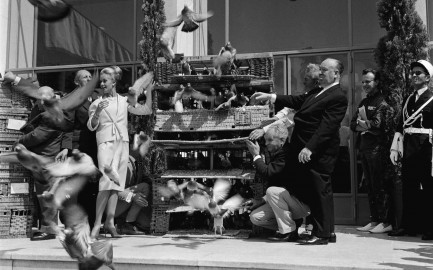
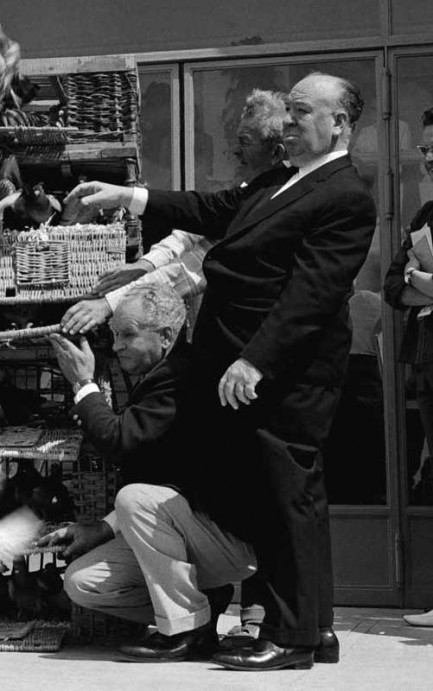 Tippi Hedren and Alfred Hitchcock release caged birds as a promo stunt for The Birds in 1963.
Tippi Hedren and Alfred Hitchcock release caged birds as a promo stunt for The Birds in 1963.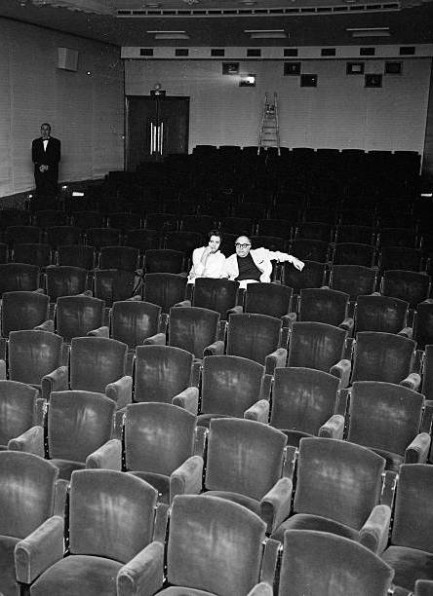 Sophia Loren sits with husband Carlo Ponti, who was a member of the 1966 Festival jury.
Sophia Loren sits with husband Carlo Ponti, who was a member of the 1966 Festival jury.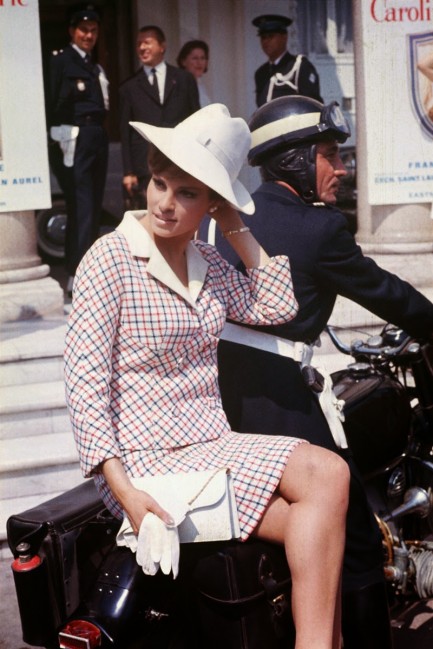 Raquel Welch poses on a motorcycle in 1966.
Raquel Welch poses on a motorcycle in 1966.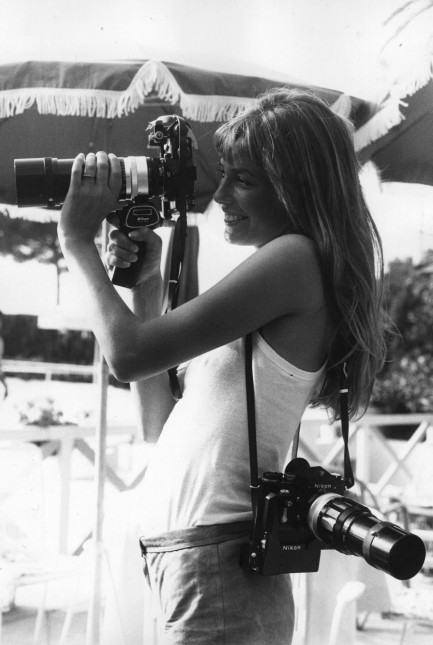 Jane Birkin takes aim with one of her cameras in 1975.
Jane Birkin takes aim with one of her cameras in 1975.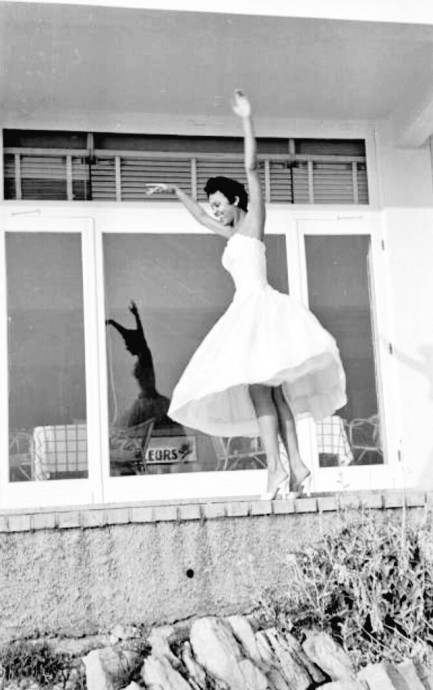 Dorothy Dandridge frolics in 1955, when she was promoting her film Carmen Jones.
Dorothy Dandridge frolics in 1955, when she was promoting her film Carmen Jones. Cinematic icon Catherine Deneuve and her sister Françoise Dorléac in 1965. Dorléac died in an automobile accident a couple of years later.
Cinematic icon Catherine Deneuve and her sister Françoise Dorléac in 1965. Dorléac died in an automobile accident a couple of years later.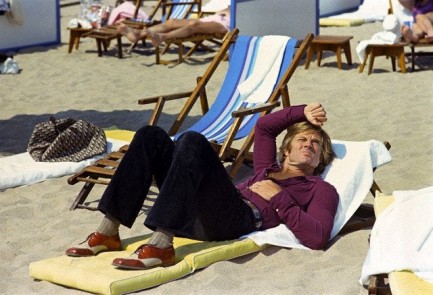 Robert Redford lounges on the beach in 1972. Based on his outfit you'd think he was in Cannes to promote The Sting, but he was actually there for his western Jeremiah Johnson, which screened May 7 of that year.
Robert Redford lounges on the beach in 1972. Based on his outfit you'd think he was in Cannes to promote The Sting, but he was actually there for his western Jeremiah Johnson, which screened May 7 of that year.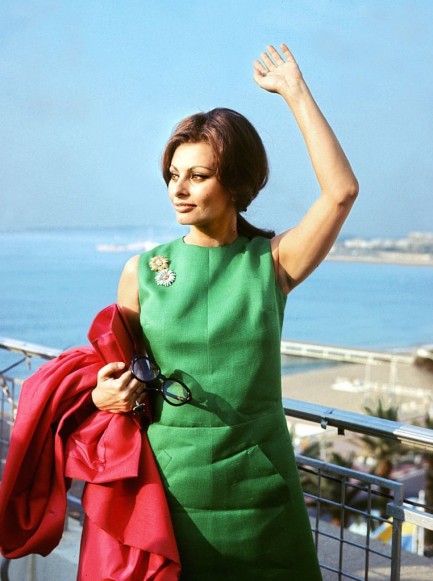 Sophia Loren waves to well-wishers in 1964.
Sophia Loren waves to well-wishers in 1964.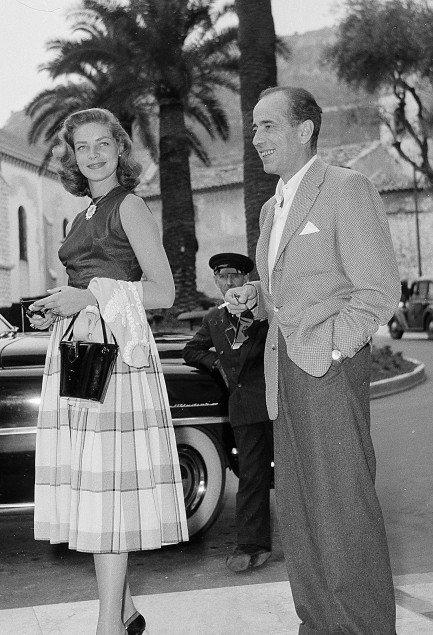 Bogie and Bacall paired up and looking distinguished in 1957.
Bogie and Bacall paired up and looking distinguished in 1957.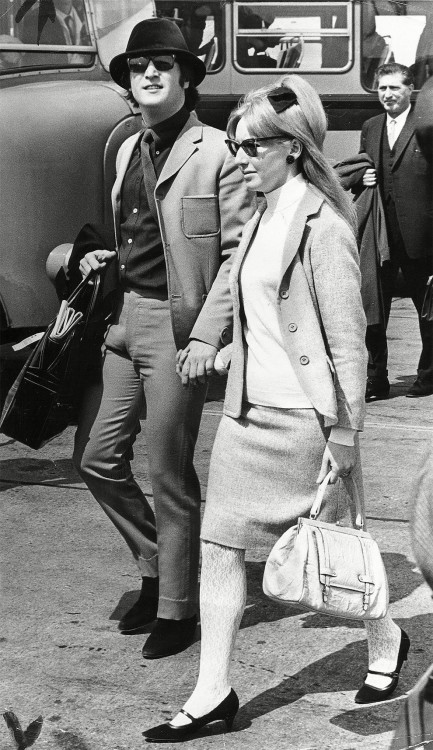
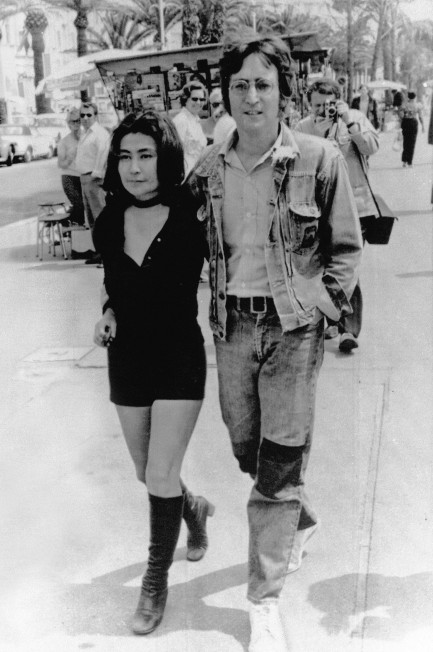 John and Cynthia Lennon in 1965, and John with Yoko Ono in 1971. Every story John told on that second trip probably started with, “When I was here with the first love of my life...” until Yoko smacked him across the mouth.
John and Cynthia Lennon in 1965, and John with Yoko Ono in 1971. Every story John told on that second trip probably started with, “When I was here with the first love of my life...” until Yoko smacked him across the mouth.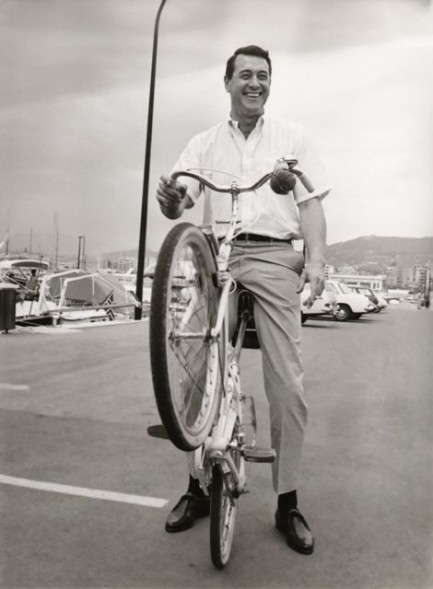 Rock Hudson and bicycle in 1966.
Rock Hudson and bicycle in 1966.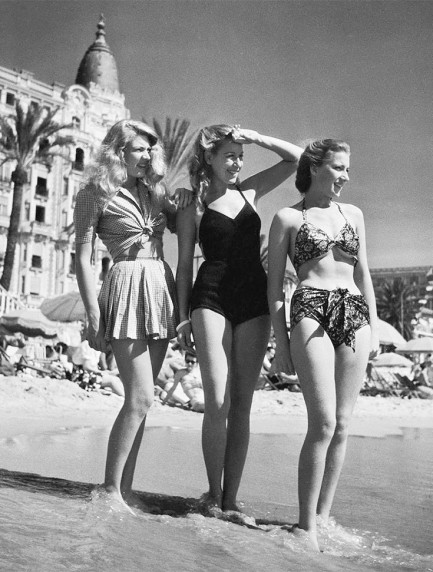 Unidentified actresses pose on the beach in 1947. To the rear is the Hotel Carlton, mentioned in the Edith Piaf image, built on the Croisette and finished in 1910.
Unidentified actresses pose on the beach in 1947. To the rear is the Hotel Carlton, mentioned in the Edith Piaf image, built on the Croisette and finished in 1910.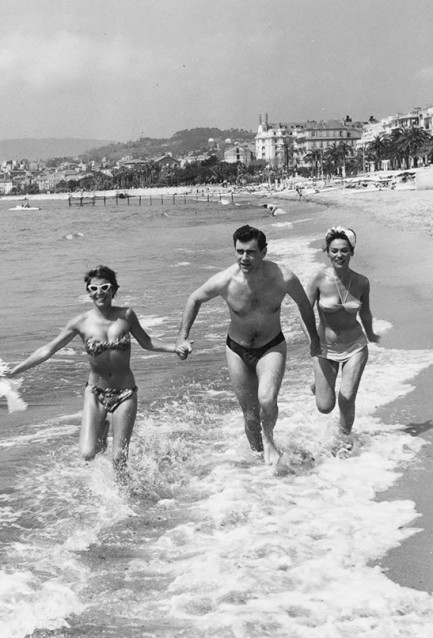 George Baker, Bella Darvi (right—your right, not his), and an unknown acquaintance have a surfside run/photo op in 1956.
George Baker, Bella Darvi (right—your right, not his), and an unknown acquaintance have a surfside run/photo op in 1956.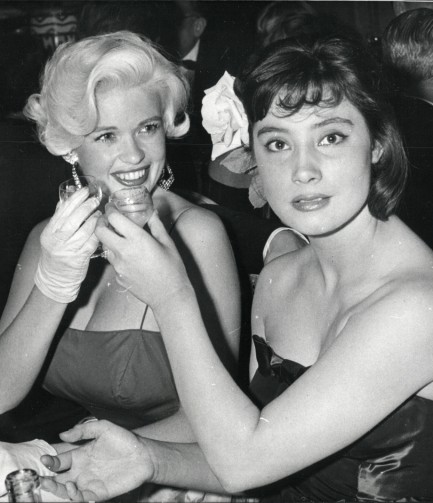 Jayne Mansfield and Russian actress Tatiana Samoïlova enjoy a toast in 1958. Mansfield probably shared the story of how she once made Sophia Loren stare at her boobs, and Samoïlova said, “Cheers to you—well played, you provocative American minx.”
Jayne Mansfield and Russian actress Tatiana Samoïlova enjoy a toast in 1958. Mansfield probably shared the story of how she once made Sophia Loren stare at her boobs, and Samoïlova said, “Cheers to you—well played, you provocative American minx.”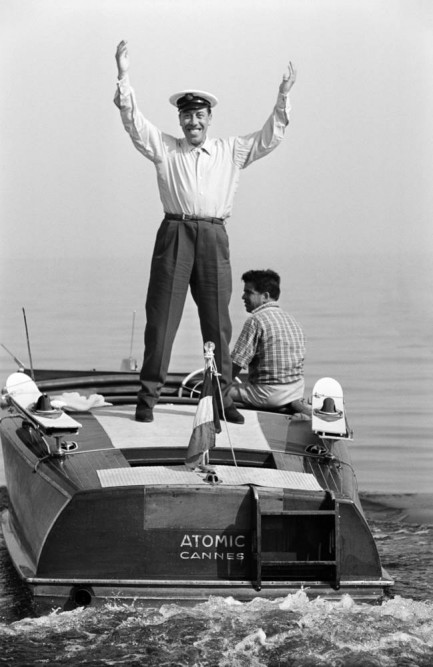 French actor Fernandel, whose real name was Fernand Contandin, on his boat Atomic in 1956.
French actor Fernandel, whose real name was Fernand Contandin, on his boat Atomic in 1956.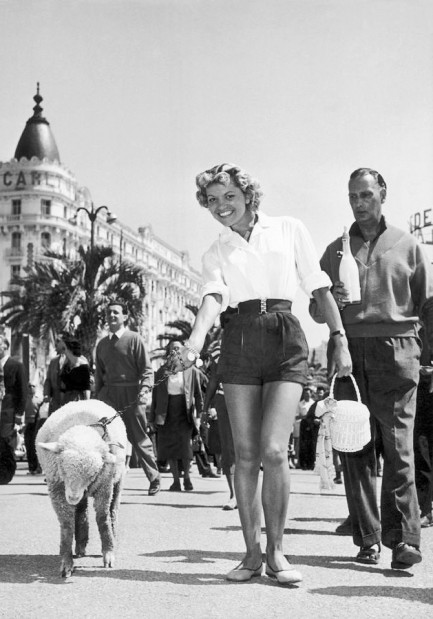 Arlette Patrick figures out a different way to generate publicity—by walking her sheep on the Croisette in 1955.
Arlette Patrick figures out a different way to generate publicity—by walking her sheep on the Croisette in 1955. A pair of water skiers show perfect form in 1955, as a battleship floats in the background.
A pair of water skiers show perfect form in 1955, as a battleship floats in the background.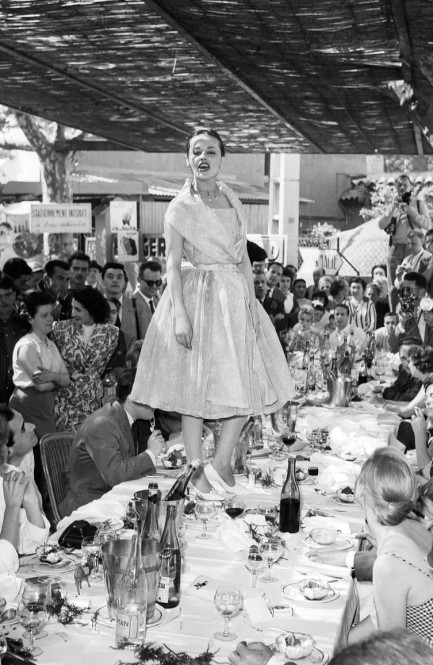 Jeanne Moreau, for reasons that are unclear, poses on a banquet table in 1958. Most sources descibe this in such a way as to make it seem spontaneous, but we have our doubts. It's a great shot, though.
Jeanne Moreau, for reasons that are unclear, poses on a banquet table in 1958. Most sources descibe this in such a way as to make it seem spontaneous, but we have our doubts. It's a great shot, though.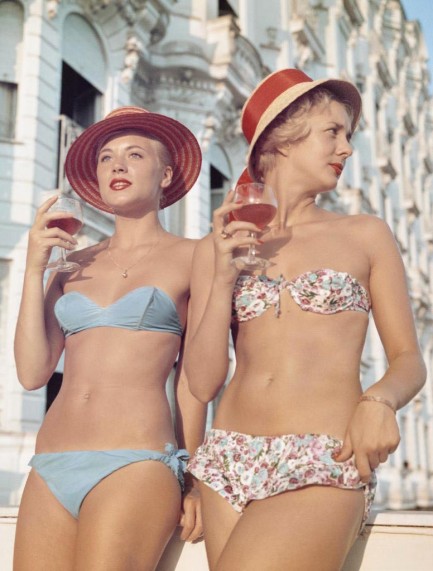 Two unidentified women take in the scene from the terrace of the Hotel Carlton, 1958. This shot is usually said to portray two tourists, but the woman on the left is the same person as in the bikini lunch shot from earlier, which tells us she's a model or actress, and both photos are staged. Like we said, publicity is everything in Cannes.
Two unidentified women take in the scene from the terrace of the Hotel Carlton, 1958. This shot is usually said to portray two tourists, but the woman on the left is the same person as in the bikini lunch shot from earlier, which tells us she's a model or actress, and both photos are staged. Like we said, publicity is everything in Cannes.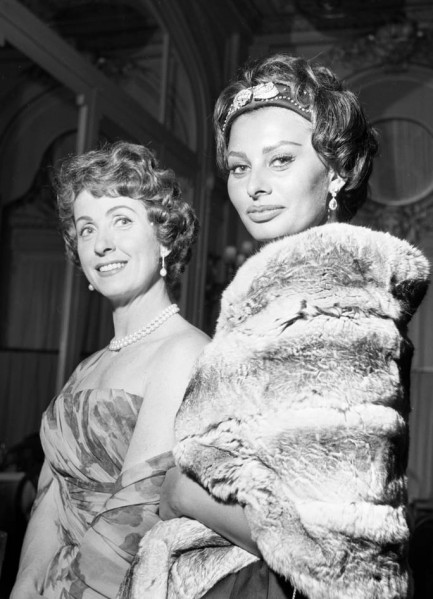
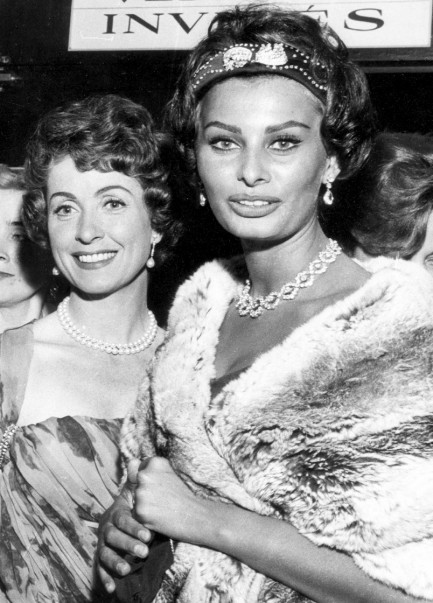 Danielle Darrieux and Sophia Loren at the 11th Cannes Film Festival, 1958.
Danielle Darrieux and Sophia Loren at the 11th Cannes Film Festival, 1958.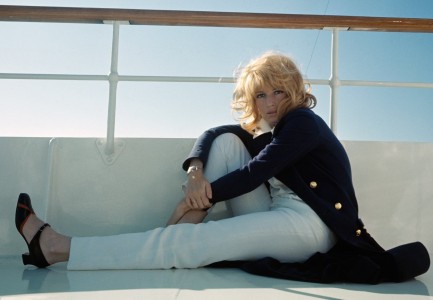 Italian actress Monica Vitti chills on a boat in 1968.
Italian actress Monica Vitti chills on a boat in 1968.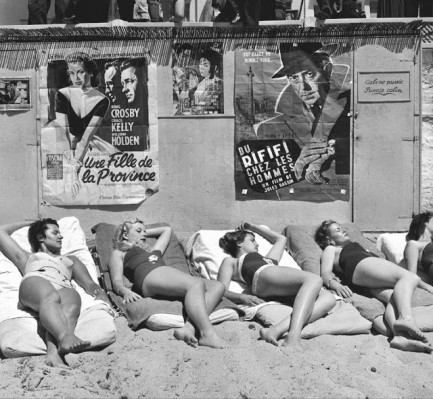 Aspiring stars catch some rays on the Croisette beach in 1955. The two large posters behind them are for The Country Girl with Grace Kelly, and Jules Dassin's Du rififi chez les hommes, both below.
Aspiring stars catch some rays on the Croisette beach in 1955. The two large posters behind them are for The Country Girl with Grace Kelly, and Jules Dassin's Du rififi chez les hommes, both below.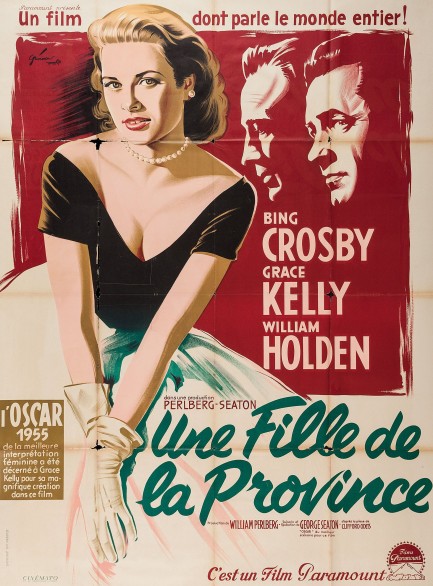
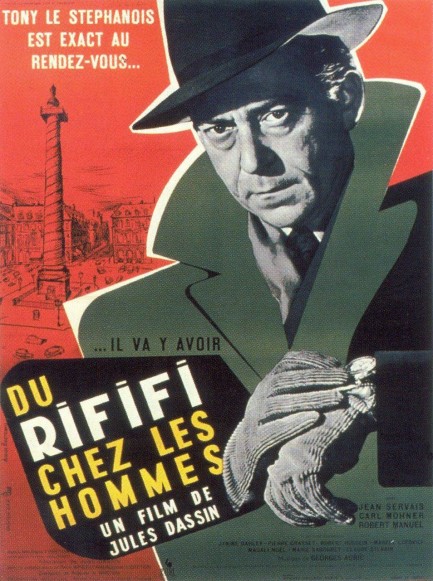
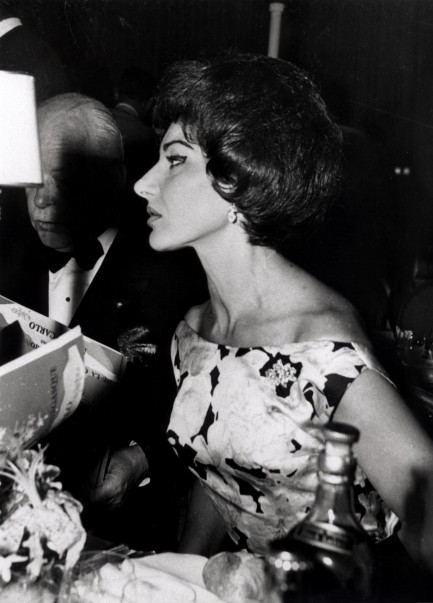 The renowned opera singer Maria Callas, 1960.
The renowned opera singer Maria Callas, 1960.FranceCannesFestival du CannesCannes Film FestivalPalme d’OrLa dolce vitaA Man Called AdamThe BirdsAlfred HitchcockEdith PiafDiana DorsGinger RogersKirk DouglasBrigitte BardotMichèle MorganRobert MitchumSimone SylvaRomy SchneiderAlain DelonSidney PoitierJean SebergNatalie WoodGrace KellySammy Davis Jr.Sharon TateRoman PolanskiMarlene DietrichTippi HedrenGene KellyMaria CallasSophia LorenCarlo PontiRaquel WelchJane BirkinJoan ScottDorothy DandridgeRobert RedfordJohn LennonCynthia LennonYoko OnoRock HudsonLauren BacallHumphrey BogartGeorge BakerBella DarviJayne MansfieldTatiana SamoïlovaCatherine DeneuveFrançoise DorléacFernandelArlette PatrickJeanne MoreauDanielle DarrieuxBernard BlierPhilomène ToulouseMonica Vittiposter artcinema
| Vintage Pulp | Oct 23 2019 |

Original comedy-thriller concept wrapped in favor of something darker.
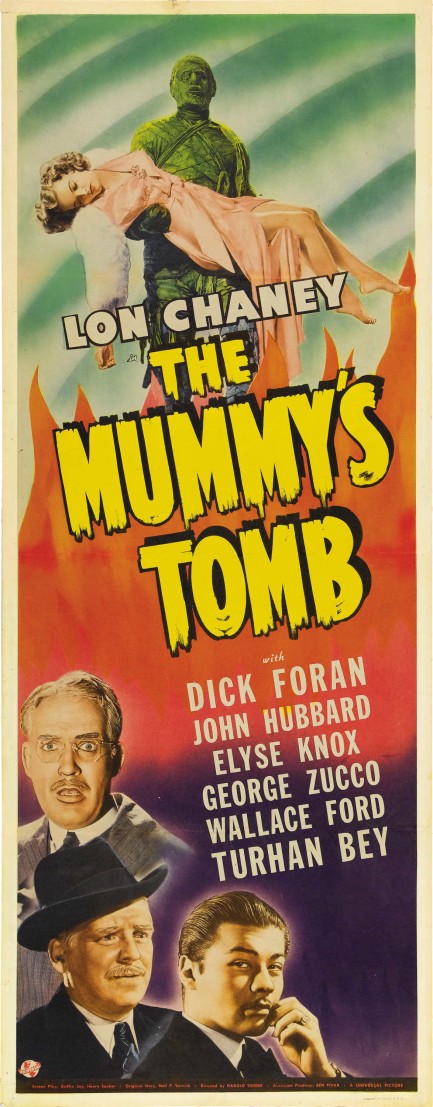
When we stumbled across The Mummy's Hand a while back, we were amused and charmed by the film. So naturally we went straight for the follow-up, The Mummy's Tomb, for which you a promo poster above. Sadly, this movie proves that Hollywood has always been terrible with sequels. The humor and charm of Hand is gone. Instead the filmmakers go for straight horror, having disposed of two of the four main characters from Hand before the story even opens, and rudely dispatching the other two after minimal participation. Were there contract troubles? Scheduling difficulties? Did the stars demand raises? If so, the mummy took care of the negotiations by killing the offending parties, but along the way the movie got embalmed. And we were so looking forward to seeing the original characters from The Mummy's Hand in a series of light thrillers. No such luck. Our guess—unsupported by any evidence—is that because Lon Chaney, Jr. was a breakout star and had been brought aboard for this film, the suits decided make the mummy central rather than ancillary, as he had been in Hand. Chaney's Mummy entries were successful, but most reviews rate the Chaneyless original as the best of the group. We agree. The Mummy's Tomb premiered in the U.S. today in 1942.
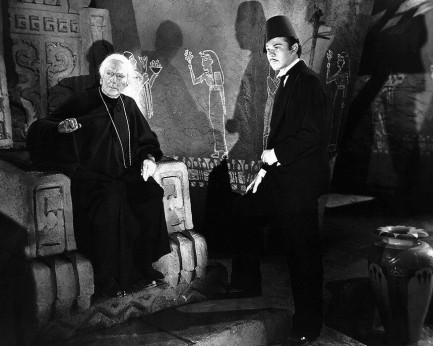
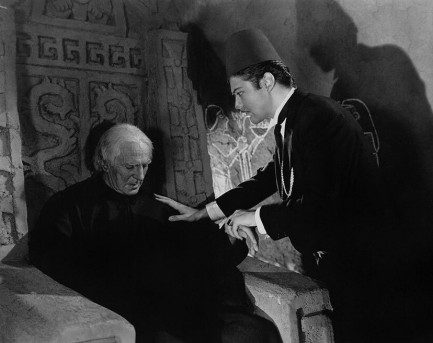
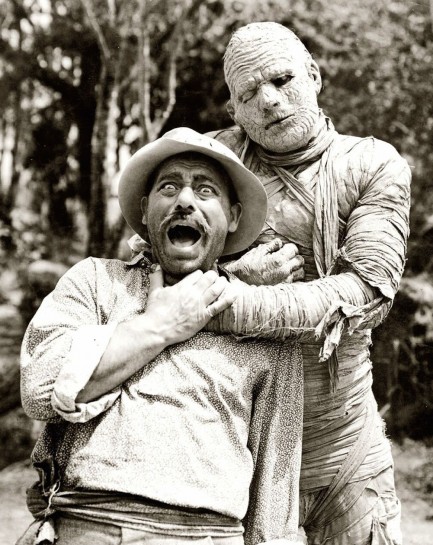
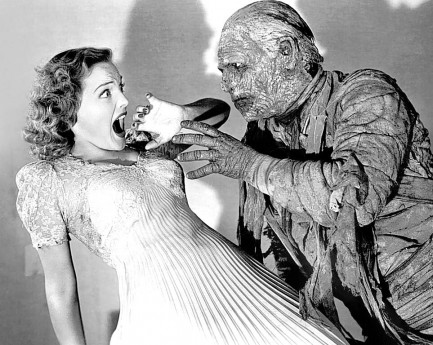
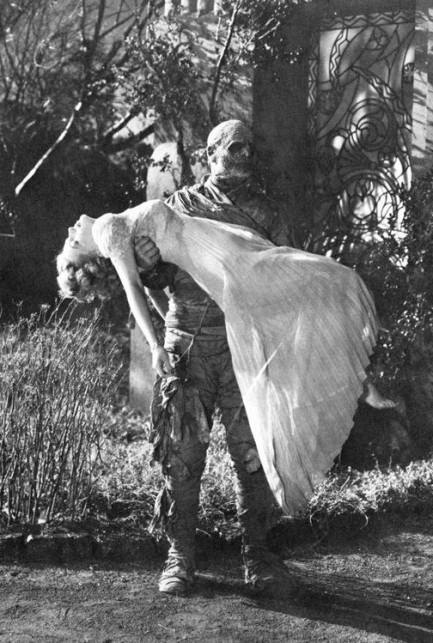
| Vintage Pulp | May 11 2019 |

There's a severe Price to pay for being a bad wife.
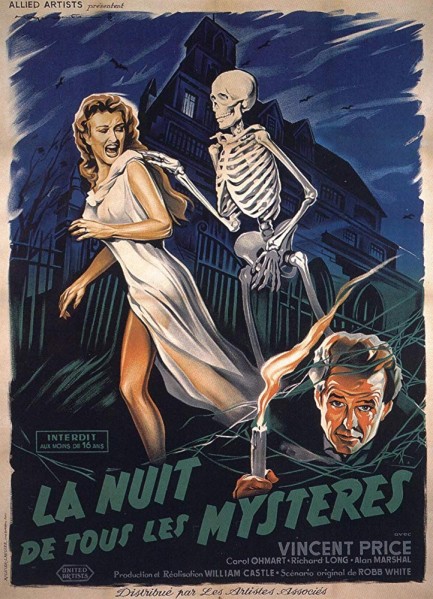
This French poster was painted by Roger Soubie for the cheeseball horror flick La nuit de tous les mystères, which was better known as House on Haunted Hill. Basically, Vincent Price offers $10,000 to anyone who can spend the night in a scary house, but in the meantime he hopes to get rid of his not-so-loving wife Carol Ohmart. That's not a spoiler—in the first few minutes of the film he tells her he wants her dead. And she him. The question is will he do it? Will she kill him? Or will they kiss and make up? You could watch and learn the answers, but in our opinion, considering how much more sophisticated horror became, this one is little more than an amusing cinematic curiosity, not worth watching, though it's notable for its exteriors of the iconic Ennis House in Los Angeles (see below). House on Haunted Hill opened in the U.S. in 1960 and reached France today in 1961.
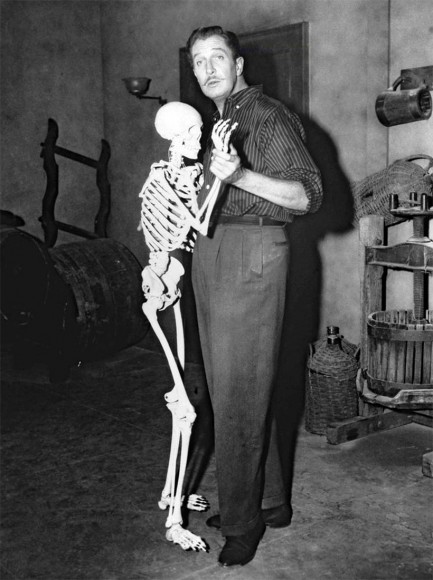
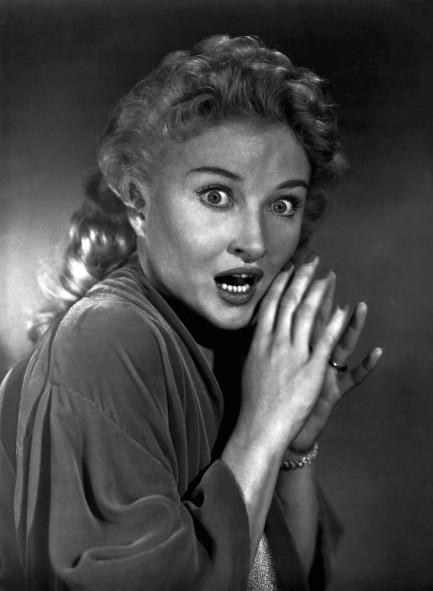

| Intl. Notebook | Mar 28 2019 |

Donut makers learn something bitter about their past.

Interesting story out of the world of donuts/doughnuts this week, as the Reimann family, originators of Krispy Kreme, (which makes by far the best tasting confections in America), were given a little surprise, and not of the sweet variety. An article in the German tabloid Bild outed the family's ancestors as Nazis. The story is notable because these ancestors weren't just footsoldiers or dull functionaries typing forms in triplicate, but full blown Aryan racists who used slave labor in their business and amassed a huge fortune doing it (that may sound familiar to people on the U.S. side of the ocean, as well). Apparently the family used female Russian and French prisoners, who they beat, sexually abused, and made strip naked for inspections. In July 1937 Albert Reimann, Jr. wrote to SS leader and Holocaust architect Heinrich Himmler and stated that his business was “a purely Aryan family business that is over 100 years old.” He also wrote that, “The owners are unconditional followers of the race theory.”
Reimann, Jr., who you see below, passed much of his fortune along to nine adopted children, four of whom now retain shares of the Krispy Kreme empire. Amazingly, the topping on this tale is that the source of all the info appears to be an ancestry check the family itself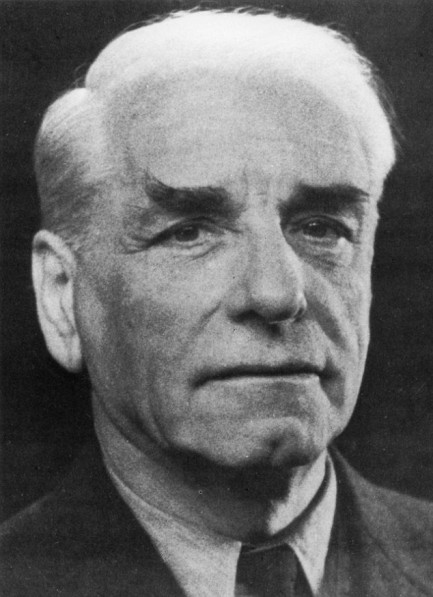 commissioned on their father. Wealthy clans generally have a firm understanding of their own family tree, what with all the money involved and the potential for virtually anyone to come out of the woodwork claiming to be a twelfth cousin or granddaughter of a patriarch's mistress, but in the case of adoptive children, putting the entire puzzle together sometimes happens later in life or not at all. In any case, the Reimann family, which holds approximately $37 billion in assets, announced that it would give $11 million to charity, or about %0.0003 of the estimated family fortune. Hey, every little bit helps.
commissioned on their father. Wealthy clans generally have a firm understanding of their own family tree, what with all the money involved and the potential for virtually anyone to come out of the woodwork claiming to be a twelfth cousin or granddaughter of a patriarch's mistress, but in the case of adoptive children, putting the entire puzzle together sometimes happens later in life or not at all. In any case, the Reimann family, which holds approximately $37 billion in assets, announced that it would give $11 million to charity, or about %0.0003 of the estimated family fortune. Hey, every little bit helps.
Reimann, Jr., who you see below, passed much of his fortune along to nine adopted children, four of whom now retain shares of the Krispy Kreme empire. Amazingly, the topping on this tale is that the source of all the info appears to be an ancestry check the family itself
 commissioned on their father. Wealthy clans generally have a firm understanding of their own family tree, what with all the money involved and the potential for virtually anyone to come out of the woodwork claiming to be a twelfth cousin or granddaughter of a patriarch's mistress, but in the case of adoptive children, putting the entire puzzle together sometimes happens later in life or not at all. In any case, the Reimann family, which holds approximately $37 billion in assets, announced that it would give $11 million to charity, or about %0.0003 of the estimated family fortune. Hey, every little bit helps.
commissioned on their father. Wealthy clans generally have a firm understanding of their own family tree, what with all the money involved and the potential for virtually anyone to come out of the woodwork claiming to be a twelfth cousin or granddaughter of a patriarch's mistress, but in the case of adoptive children, putting the entire puzzle together sometimes happens later in life or not at all. In any case, the Reimann family, which holds approximately $37 billion in assets, announced that it would give $11 million to charity, or about %0.0003 of the estimated family fortune. Hey, every little bit helps.| Vintage Pulp | Sep 27 2018 |

I know I shouldn't laugh, but I never realized you even had a heart.
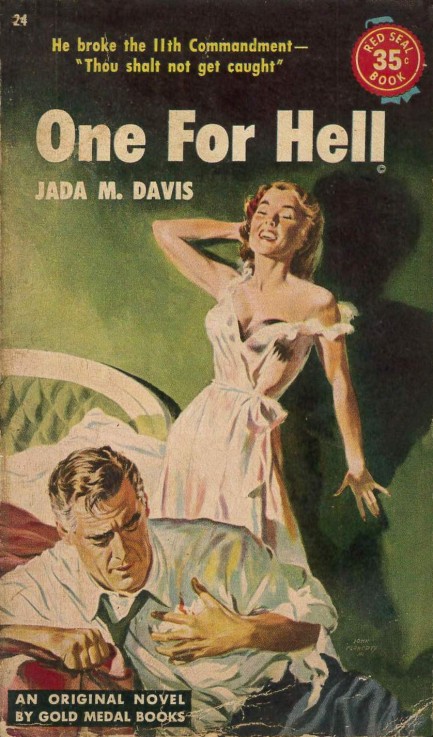
In the 1952 crime thriller One for Hell trouble comes to the fictional West Texas oil town of Breton and it arrives by train. Author Jada M. Davis tells the readers this with strong style, as various characters around town hear a sound portentous of approaching calamity but which they don't yet recognize as such. Davis writes in chapter three, “Far off, faint but clear, a train whistle mourned the passing of the night. Whoo-ooo-ooo, whoo-ooo-ooo, whooooo...”
Chapter four starts this way: The mayor heard the whistle, the whoo-ooo-oooing, shrilly whoo-ooo-oooing whistle, and sat up in bed.
Chapter five opens with this: Chief Bronson heard the whoo-ooo-oooing, whoo-ooo-OOO, whoo-ooo-oooing of the train and was glad morning was on its way.
And chapter six opens: The train whistle sounded fuzzy and dreamy to Laura Green, the whoo-ooo-ooo, whoo-ooo-ooo, whooooo-oooing-oooing lonesomely lonely and by itself.
Yes, trouble has arrived in the form of a man so bad he'll turn even the most corrupt town west of the Mississippi River upside down. He's a man who has no limits to how much he'll lie, what he'll steal, and who he'll hurt. He's a thief and a grifter. When he stumbles into a position of authority there's no thought of playing it straight. The trust he's given just means more opportunity to do wrong.
We suspect Jada Davis identified a bit with his creation, because like the author, his lead character has a name that sounds like it belongs to a woman—Willa. And he has an attitude about it, as a couple of characters find out when they comment on the fact. Willa robs stores, frames the innocent, beats women, and worse. He's racist, sexist, and destructive in ways most ’50s crime novel bad guys can't even touch. Nature or nurture? It's impossible to know.
All in all One for Hell is an effectively dark piece of entertainment, but not for the faint of heart in these days when the difference between depicting evil and endorsing it seems ever harder for people to discern. This edition came from Red Seal and it has cover art by John Floherty, Jr., who was active throughout the 1940s and 1950s. We featured another one of his covers not long ago, and you can see that here. We'll see if we can dig up more down the line.
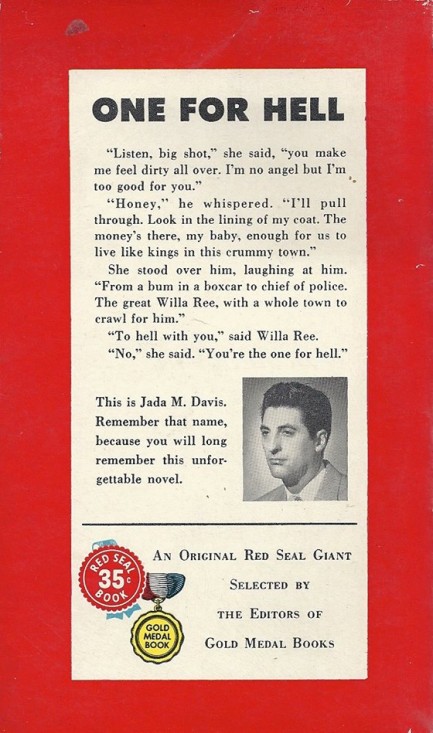

| Hollywoodland | Sep 8 2018 |

The Lowdown has the scoop on a fantastic plastic.
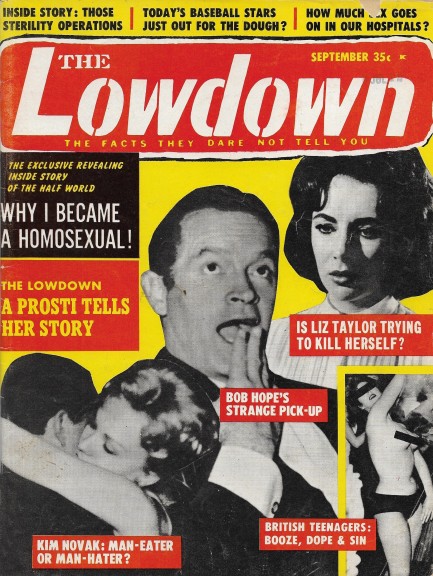
Today we're back to tabloids with an issue of The Lowdown published this month in 1962. The cover features Bob Hope goofing around, Elizabeth Taylor looking serious, Kim Novak nuzzling, and a random naked party girl randomly partying naked. Inside the issue are stories on Hope getting the hots for trans star Coccinelle in a French nightclub, Novak raking a series of suitors over the coals, and baseball players succumbing to greed. So much material in these tabloids, and so little time to highlight a story or two. But forced to make a choice, we're opting to discuss a piece on something called Scoobeedoo. How can we not? We all remember the cartoon, and now this story seemed guaranteed to tell us where the name of the legendary dog came from. We never knew we wanted to know that. But when we saw the word Scoobeedoo we realized, yes, we want to know.
Lowdown describes Scoobeedoo as a craze and a do-it-yourself gimmick. Apparently, it was popularized when French singer Sacha Distel wrote a 1958 song of the same name. But he didn't invent it—he just sang about it. The actual thing was invented by a French plastics company and called Scoubidou. It was basically a spool of brightly colored plastic cord that could be woven or tied to make—well, whatever you wanted. You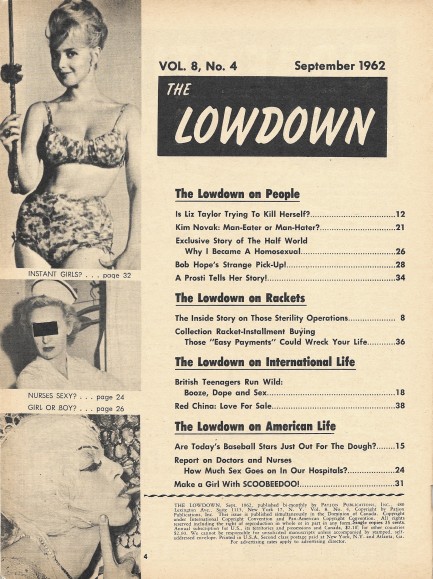
 could make lampshades, baskets, placemats, keychains. A California man famously used it to make bikinis. We imagine it would work for household repairs, light sexual bondage, whatever you needed it for. The stuff was as popular as the hula hoop for a while. Apparently figures in the electrical industry even complained that a shortage of wiring insulation was due to Scoubidou because it used the same type of plastic.
could make lampshades, baskets, placemats, keychains. A California man famously used it to make bikinis. We imagine it would work for household repairs, light sexual bondage, whatever you needed it for. The stuff was as popular as the hula hoop for a while. Apparently figures in the electrical industry even complained that a shortage of wiring insulation was due to Scoubidou because it used the same type of plastic.
Readers above a certain age will already know about all this, of course, but we had no idea. We weren't around back then. And that, succinctly, is why we maintain this website—because we learn about a past we never experienced. But surprisingly Scoubidou isn't just the past. It apparently still exists. It even has a Wikipedia entry with examples of the many things you can make (but no bikinis). So this was a very informative issue of The Lowdown, all things considered. The only thing we're bummed about is that our Scoubidou research provided no actual confirmation that the cartoon dog Scooby-Doo got his name from the toy. But he had to, right? Maybe a reader has the answer to that. In the meantime we have more than twenty scans below for your enjoyment and other issues of The Lowdown you can access by clicking the magazine's keywords at bottom.

 could make lampshades, baskets, placemats, keychains. A California man famously used it to make bikinis. We imagine it would work for household repairs, light sexual bondage, whatever you needed it for. The stuff was as popular as the hula hoop for a while. Apparently figures in the electrical industry even complained that a shortage of wiring insulation was due to Scoubidou because it used the same type of plastic.
could make lampshades, baskets, placemats, keychains. A California man famously used it to make bikinis. We imagine it would work for household repairs, light sexual bondage, whatever you needed it for. The stuff was as popular as the hula hoop for a while. Apparently figures in the electrical industry even complained that a shortage of wiring insulation was due to Scoubidou because it used the same type of plastic.Readers above a certain age will already know about all this, of course, but we had no idea. We weren't around back then. And that, succinctly, is why we maintain this website—because we learn about a past we never experienced. But surprisingly Scoubidou isn't just the past. It apparently still exists. It even has a Wikipedia entry with examples of the many things you can make (but no bikinis). So this was a very informative issue of The Lowdown, all things considered. The only thing we're bummed about is that our Scoubidou research provided no actual confirmation that the cartoon dog Scooby-Doo got his name from the toy. But he had to, right? Maybe a reader has the answer to that. In the meantime we have more than twenty scans below for your enjoyment and other issues of The Lowdown you can access by clicking the magazine's keywords at bottom.
Update: a reader does have the answer. One of you always does. J. Talley wrote this:
The series was originally rejected by CBS executives, who thought the presentation artwork was too frightening for children and that the show must be the same. CBS Executive Fred Silverman was listening to Frank Sinatra's “Strangers In The Night” (with the scatted lyric “dooby-dooby-doo”) on the flight to that ill-fated meeting. After the show was rejected, a number of changes were made: the Hanna-Barbera staff decided that the dog should be the star of the series instead of the four kids, and renamed him Scooby-Doo after that Sinatra lyric. The spooky aspects of the show were toned down slightly, and the comedy aspects tuned up. The show was re-presented, accepted, and premiered as the centerpiece for CBS's 1969-1970 Saturday Morning season.
Thanks, J. That's another hole in our historical knowledge successfully filled in. Is it any surprise Sinatra was involved somehow? That guy really got around.
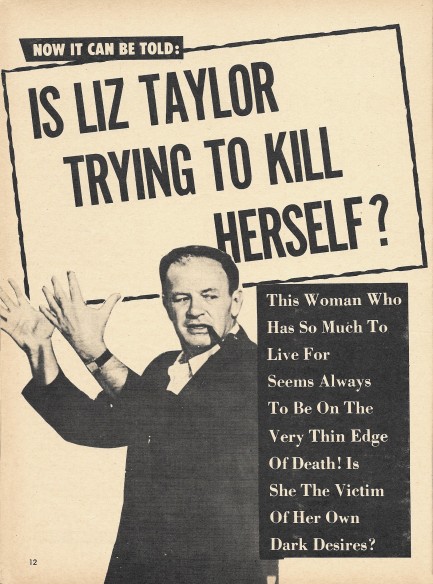
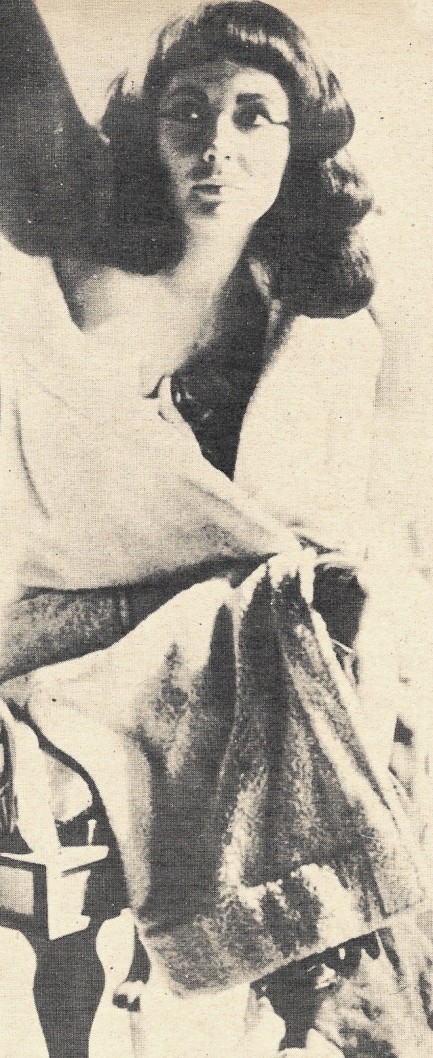
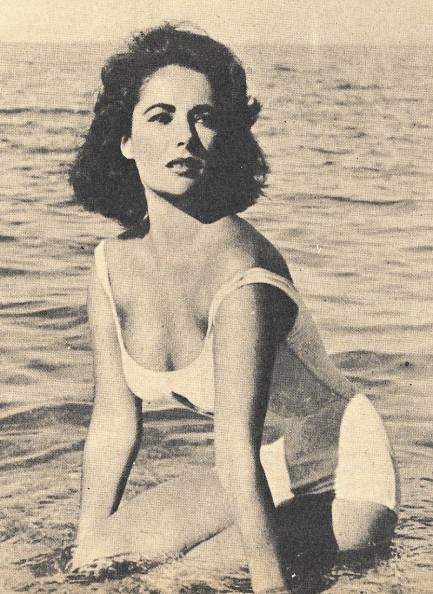
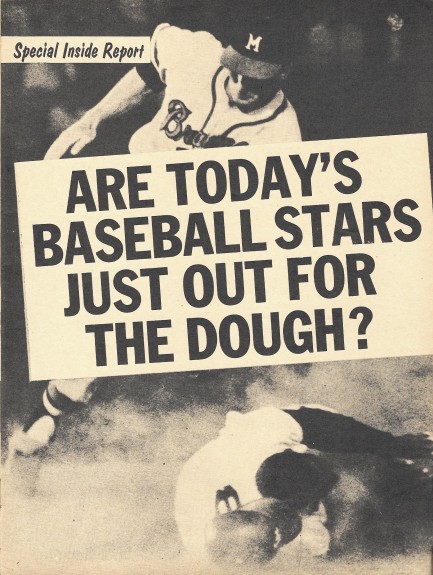
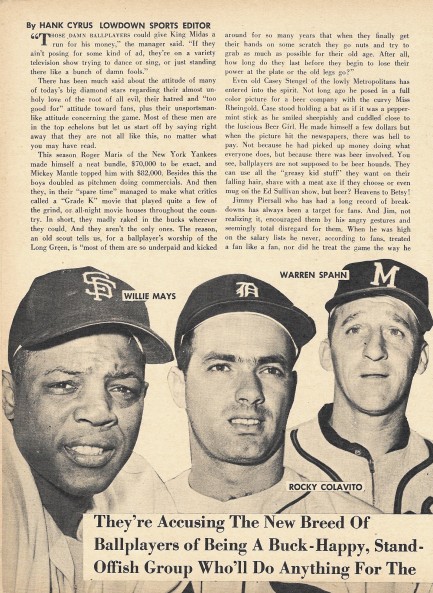
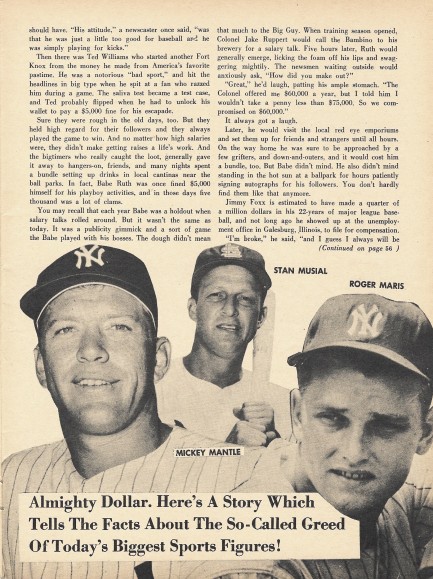
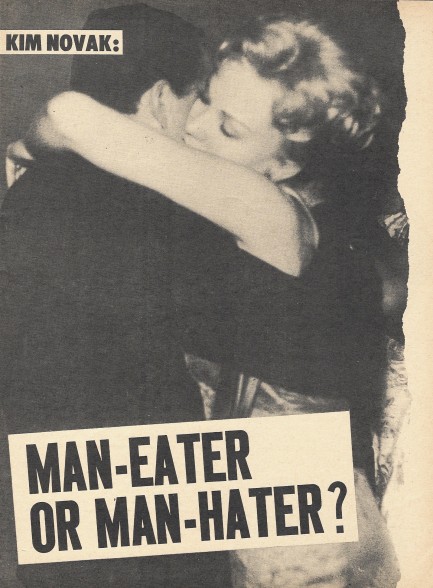
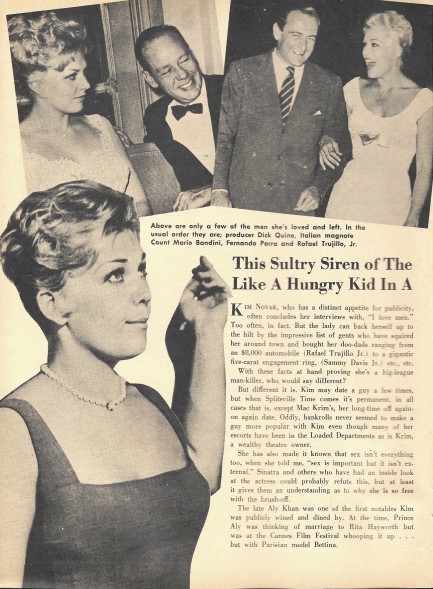
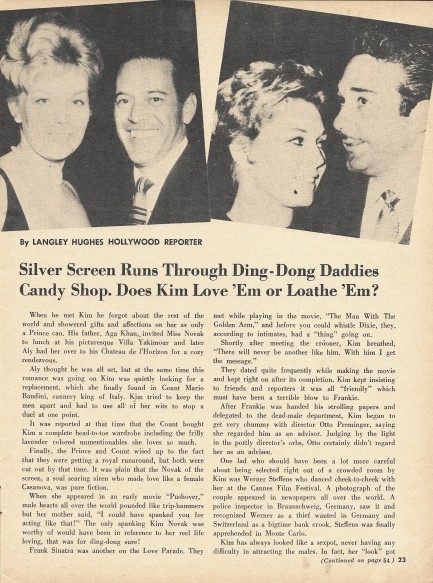
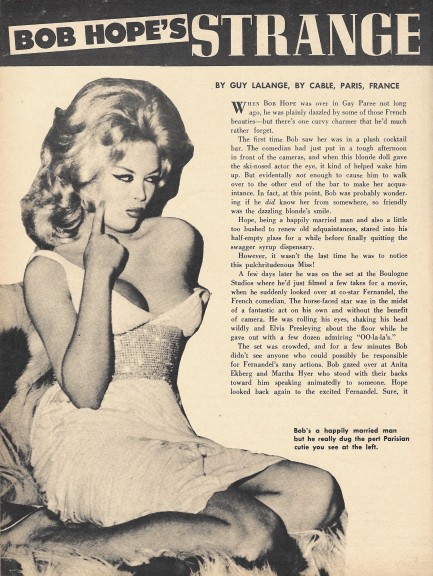
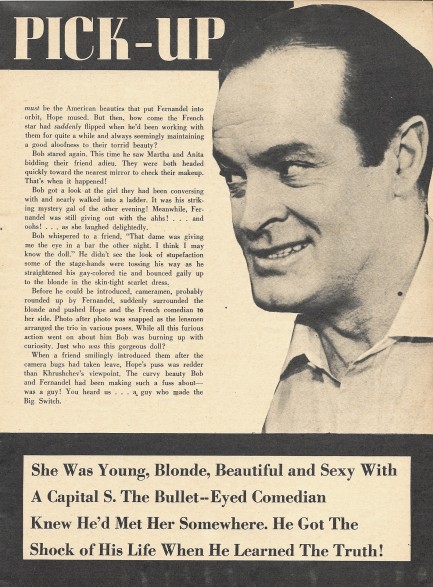
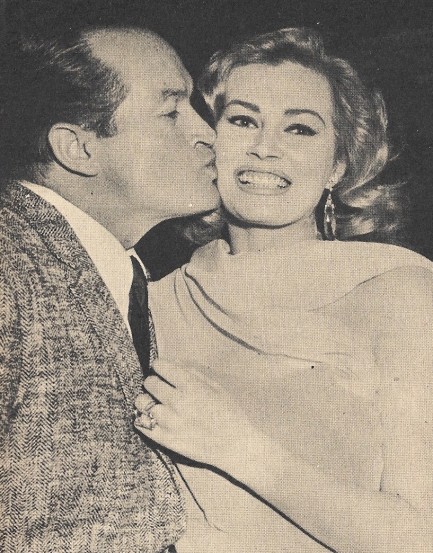
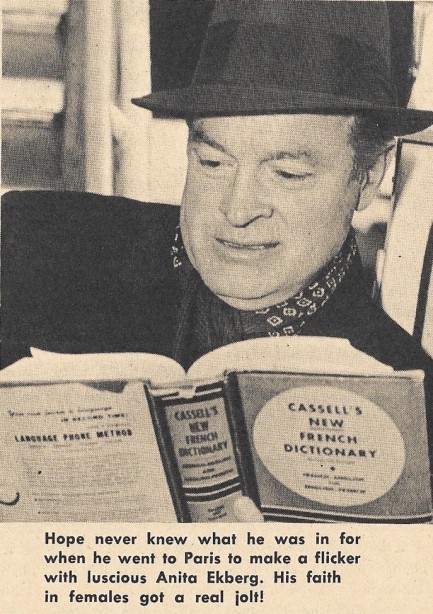
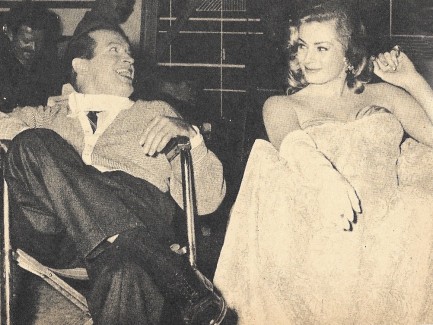
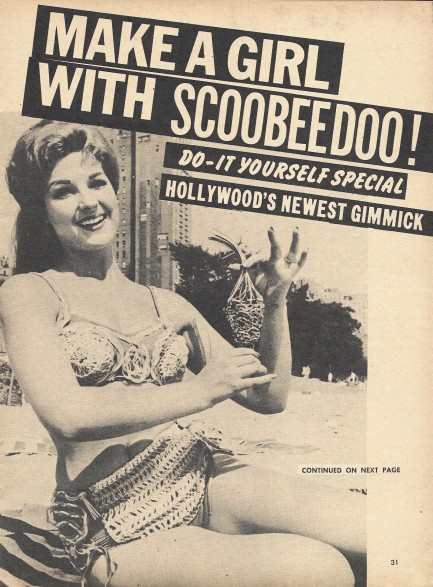
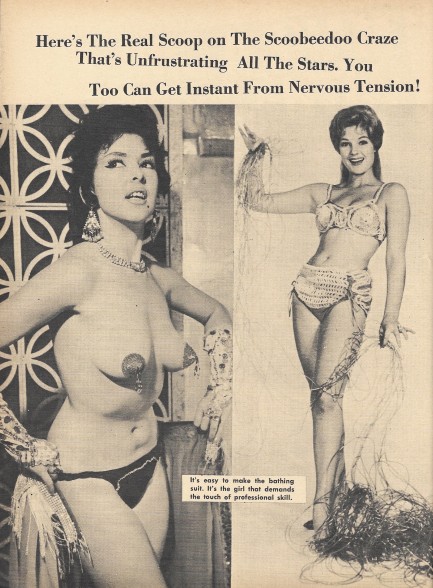
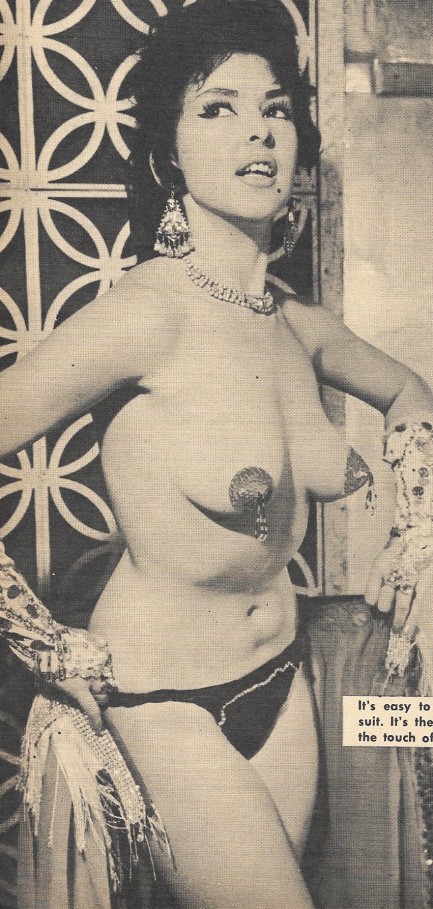
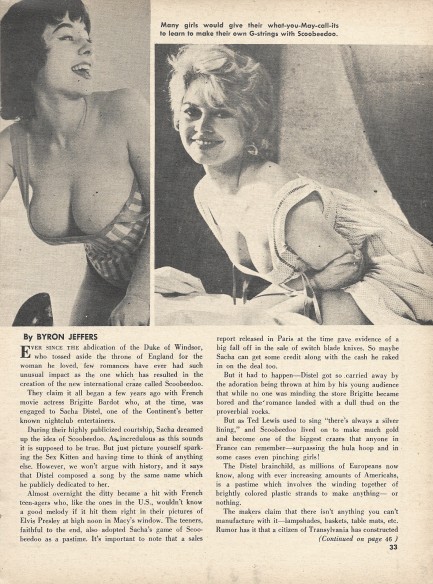
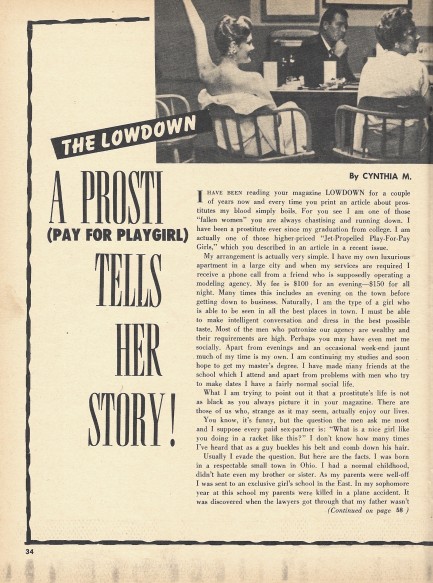
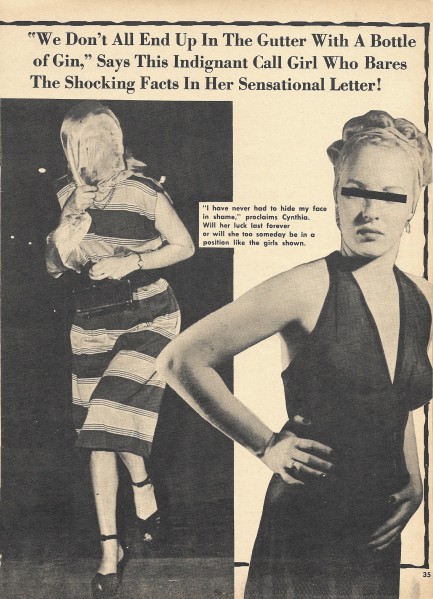

| Vintage Pulp | Feb 12 2018 |

Have you ever considered the possibility that it's just a penis substitute offering psycho orgasmic relief for self esteem inadequacies?
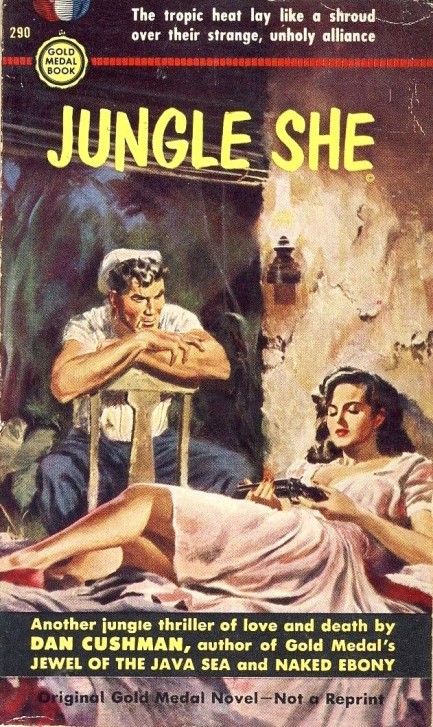
Leave it to a woman to overcomplicate things. Sometimes a gun is just a plain old penis substitute. Dan Cushman's 1953 novel Jungle She features plenty of those, as his franchise man's-man Frisco Dougherty helps an escaped “half caste” damsel in distress return to the locale of her captivity on a Borneo plantation to try and steal the tyrannical owner Van Hoog's hidden fortune. That's supposed to be her in John Floherty, Jr.'s cover art, and if you're thinking to yourself she looks inclined to use the gun on Frisco, well—spoiler alert—she actually does shoot him, but he survives to confront Van Hoog in a vertiginous rope bridge climax. If you want to buy any of Cushman's jungle adventures you'll probably find them expensive—up to $100 for this one. But be patient. We also saw it for eight bucks.
 |
 |




































































